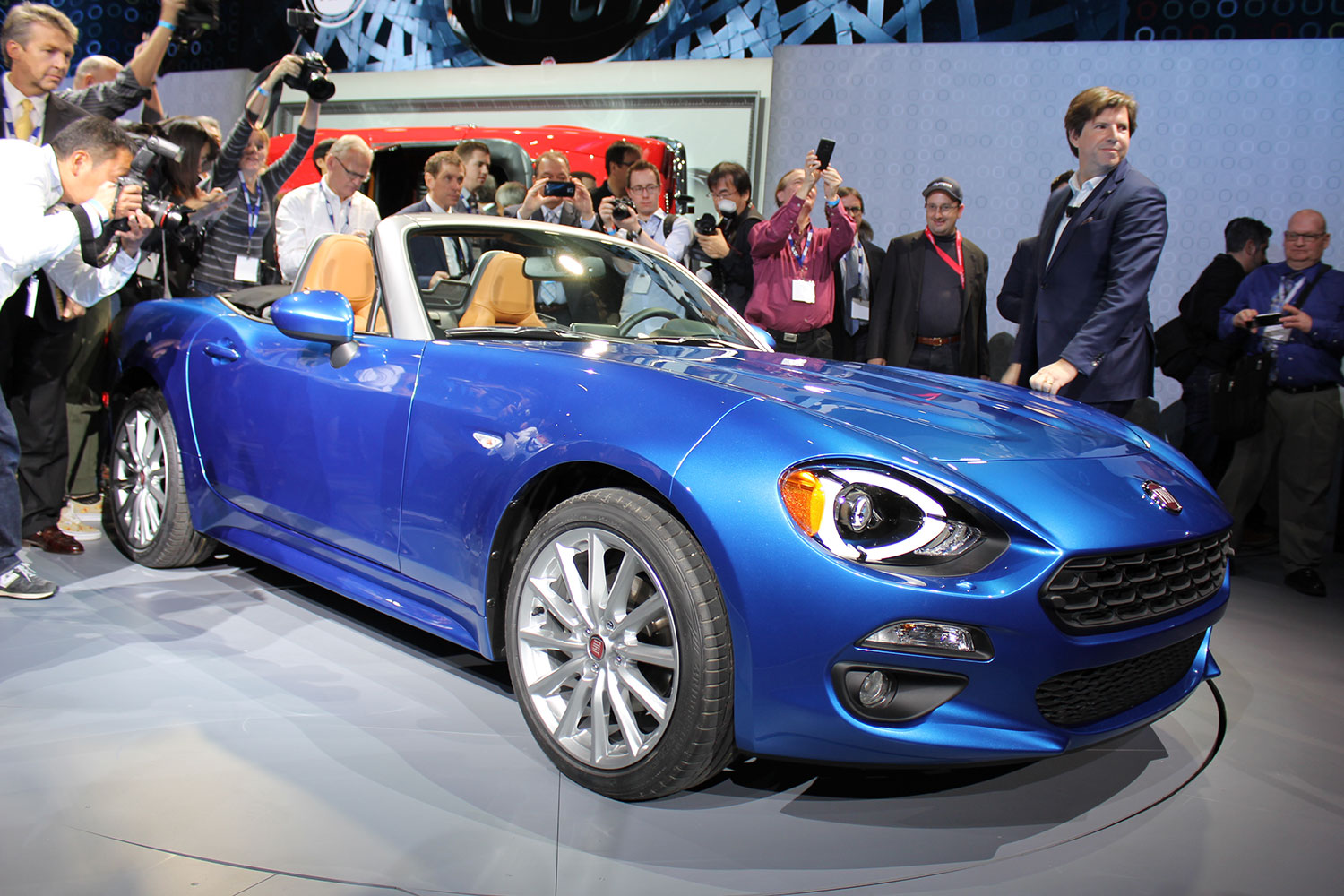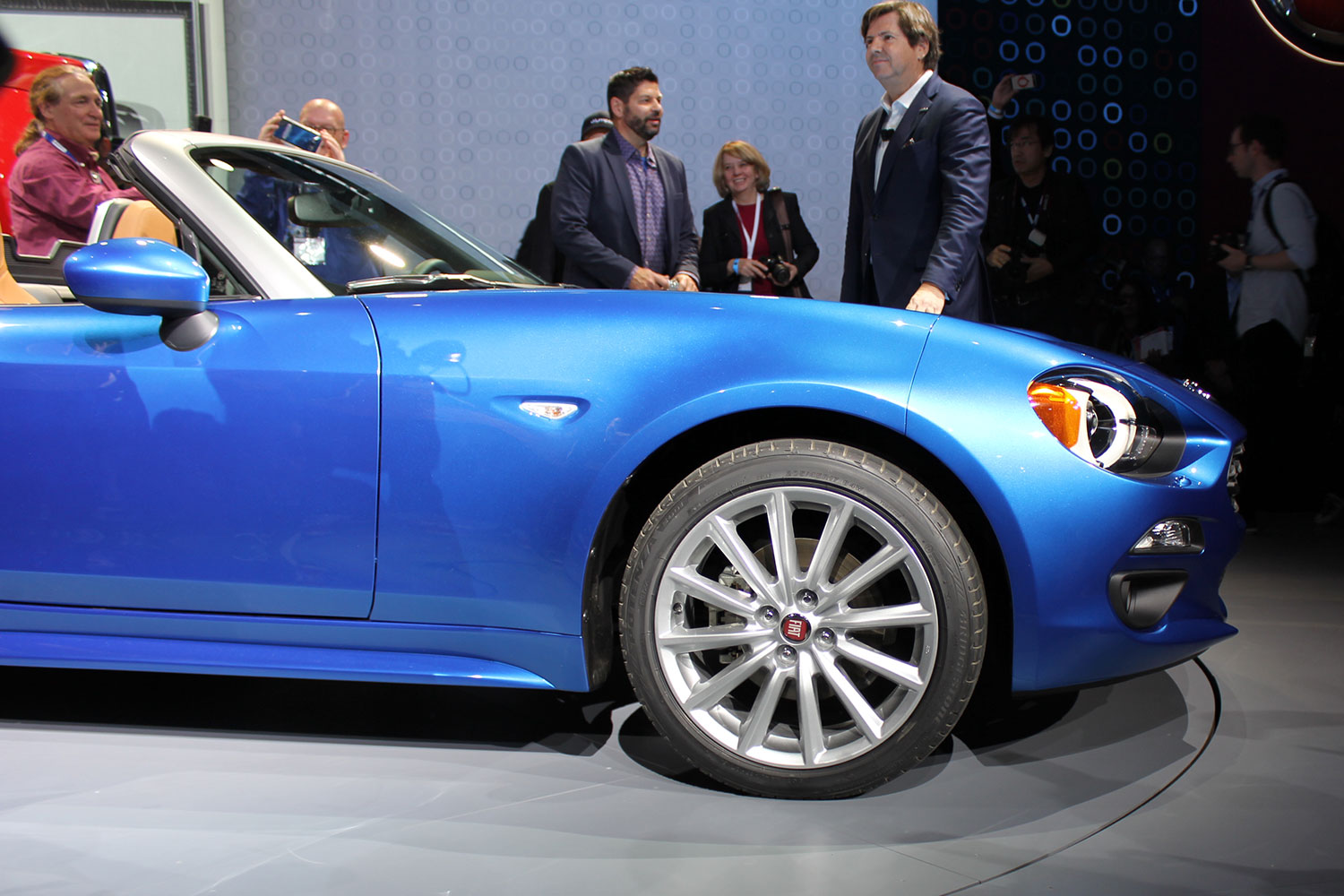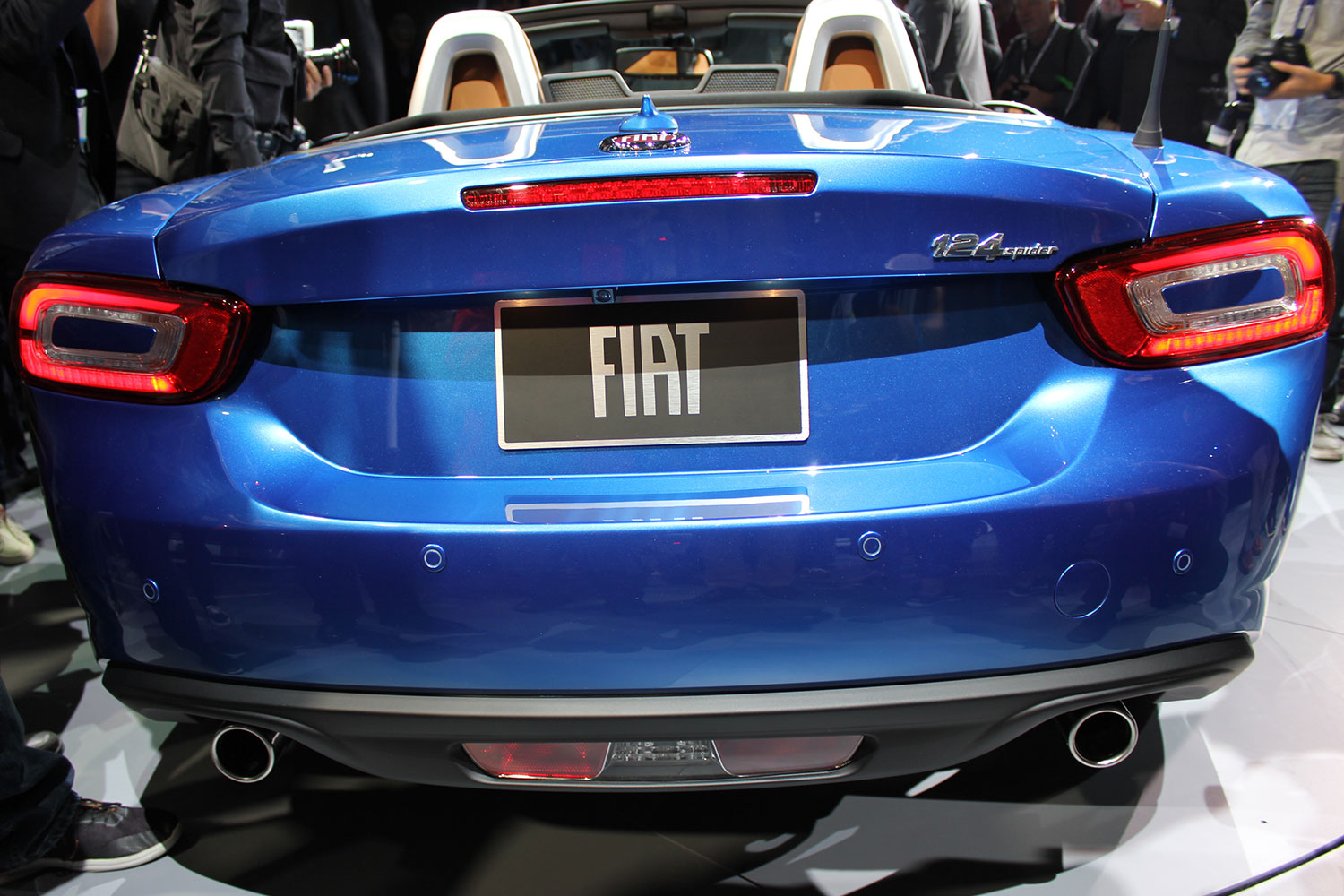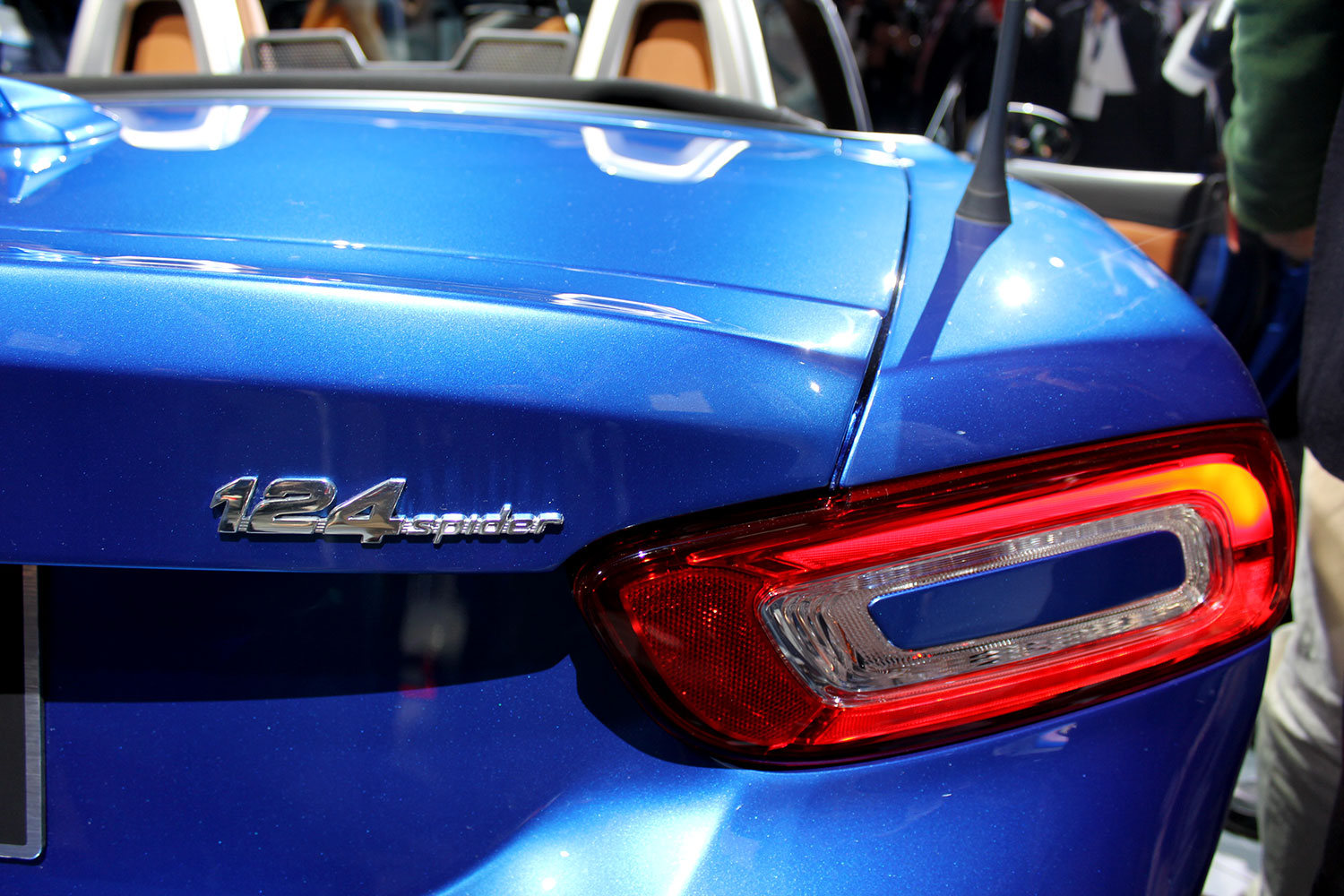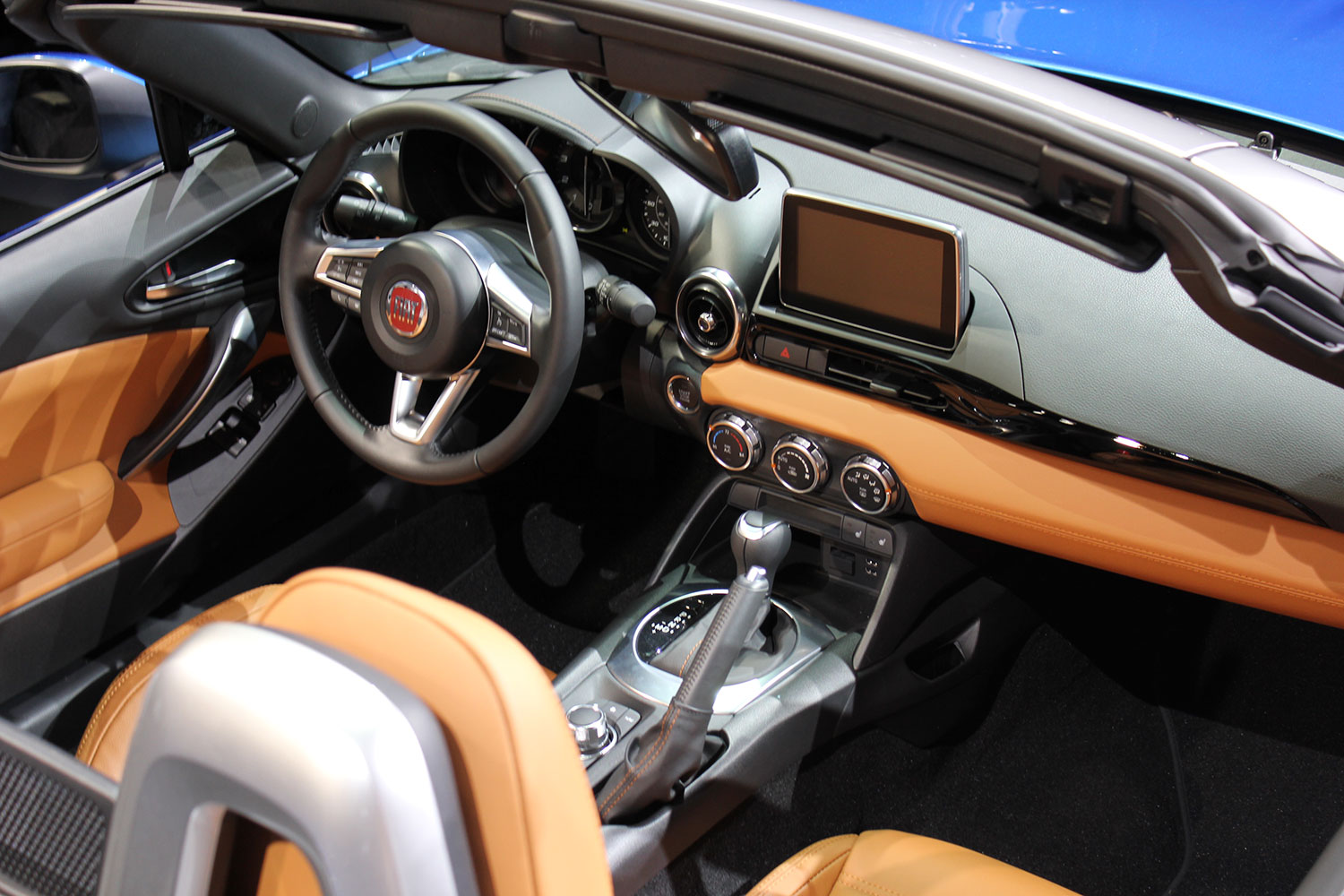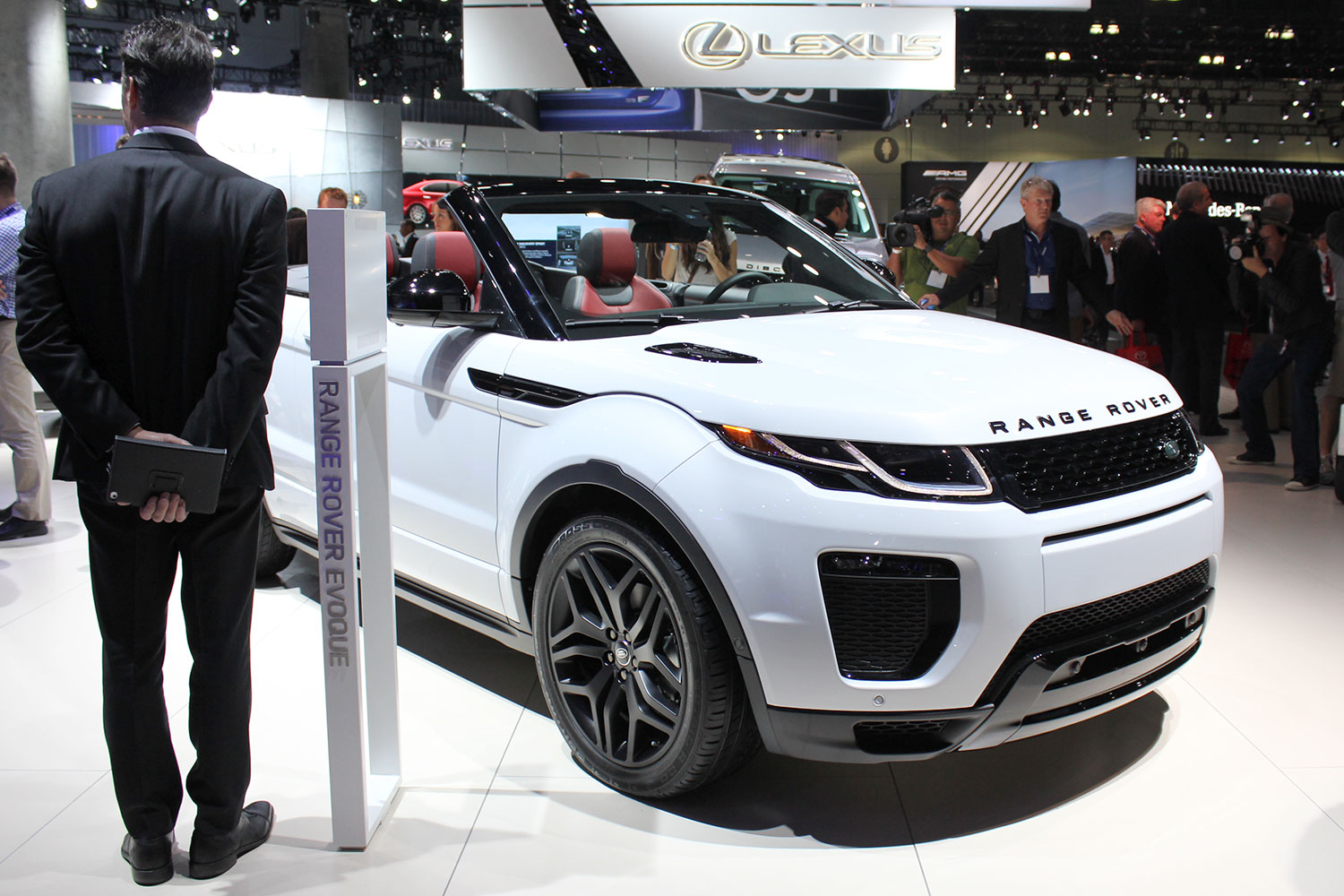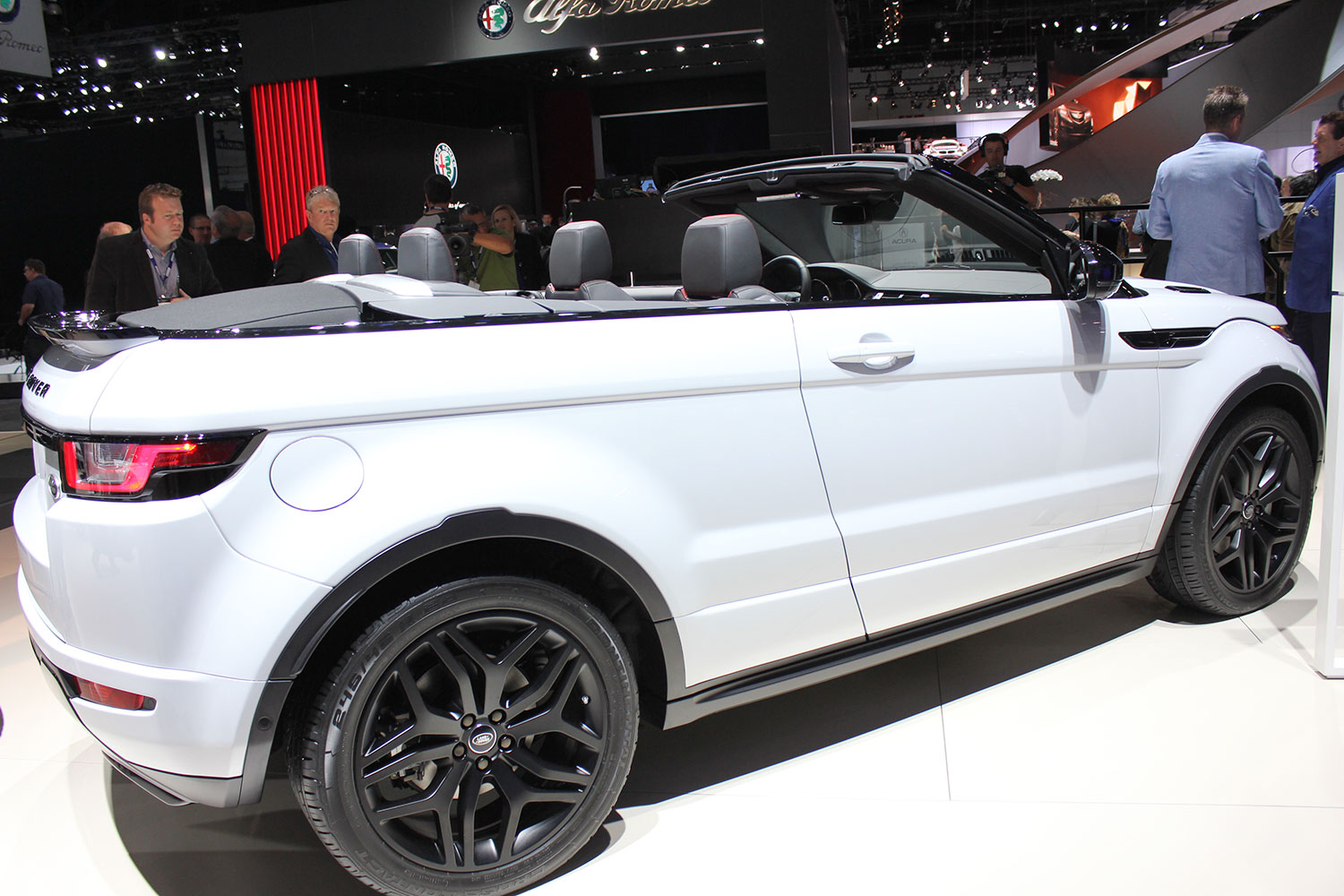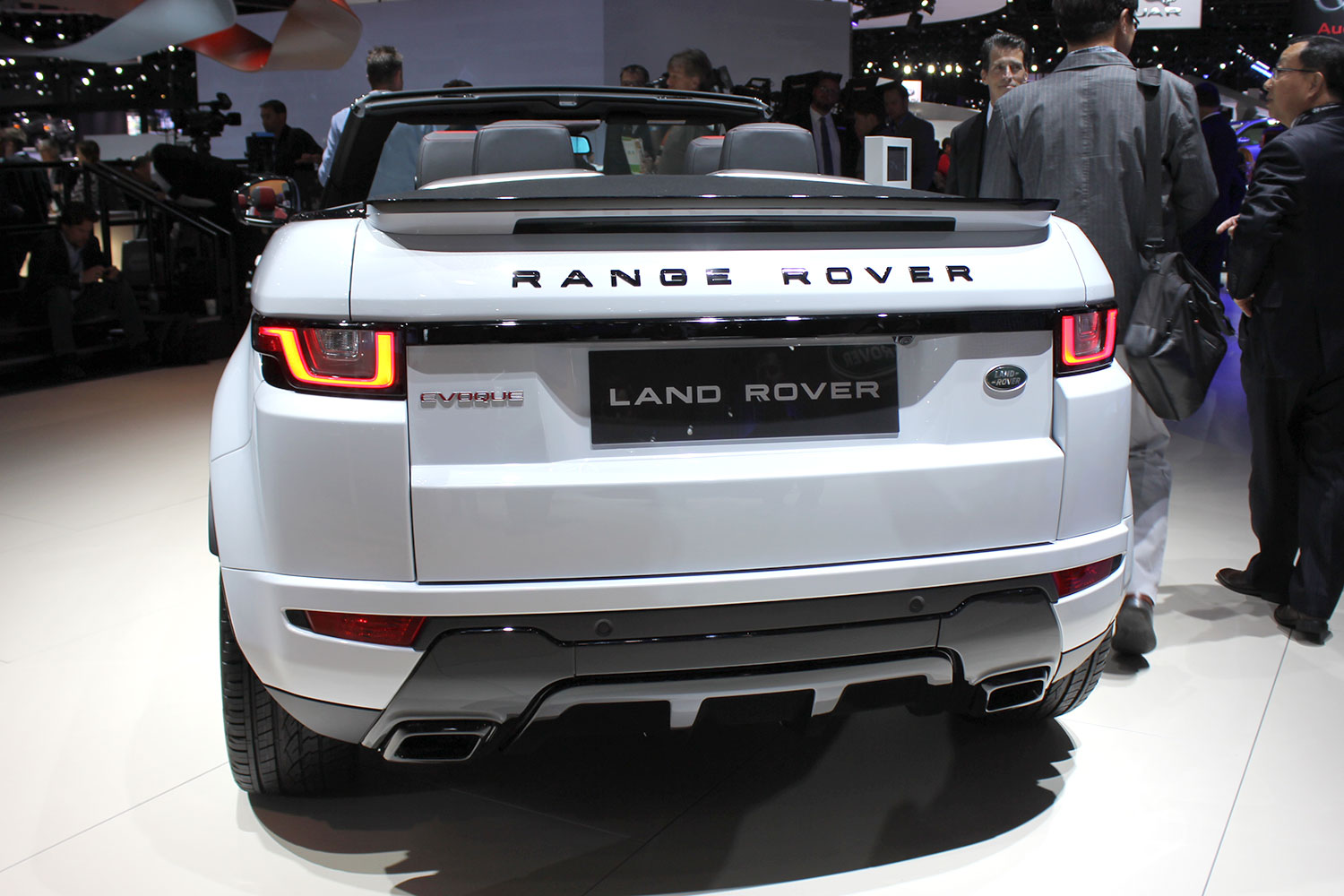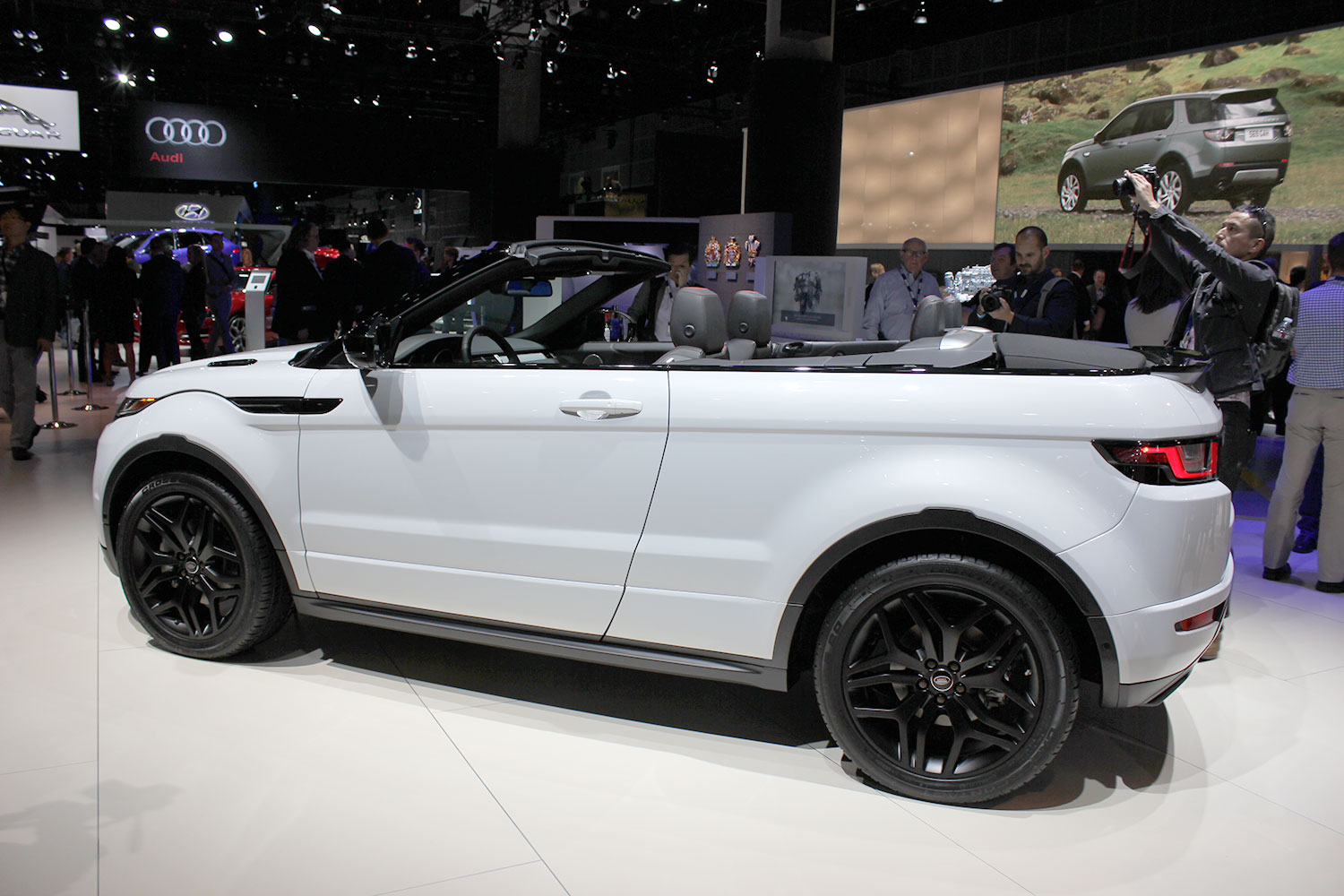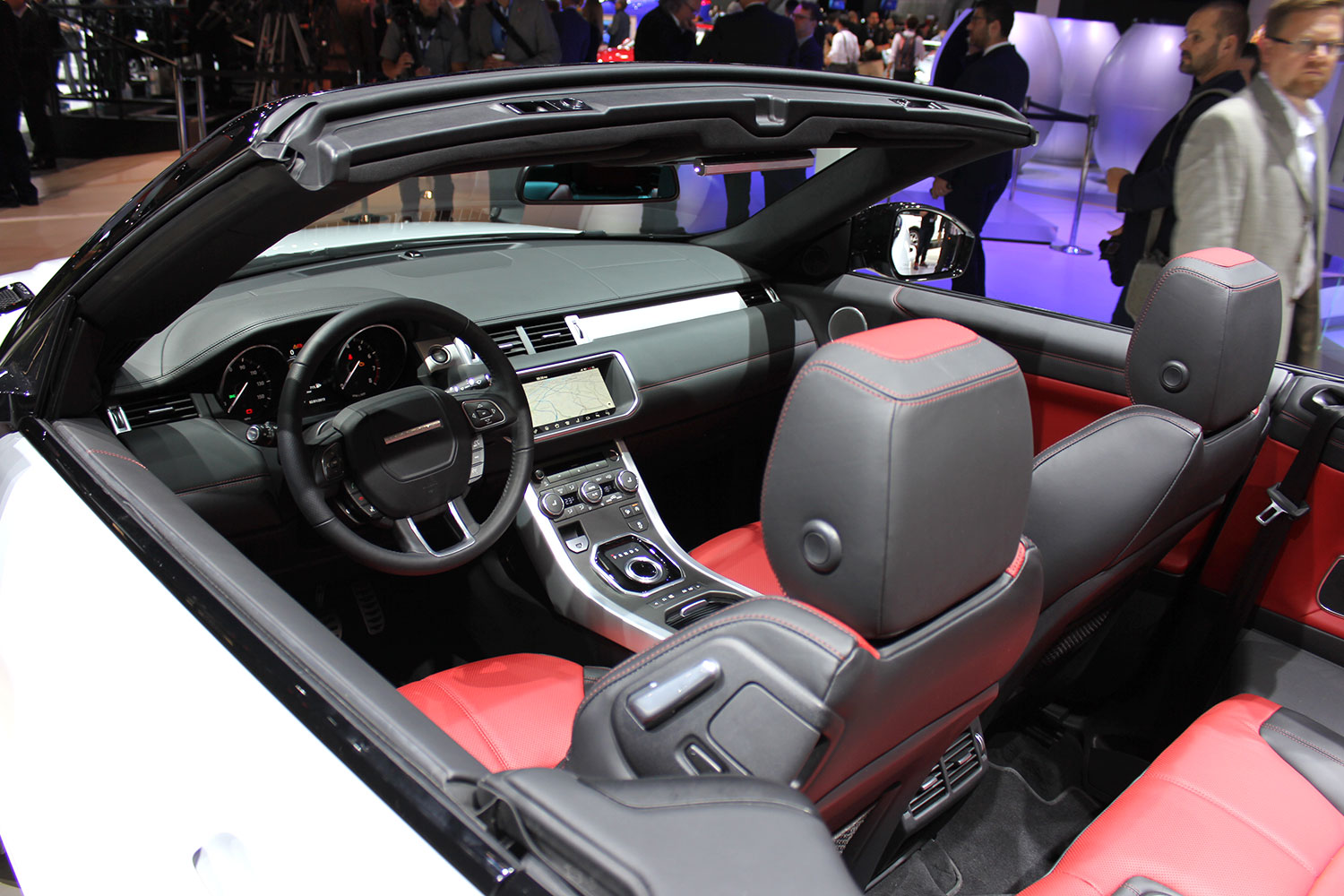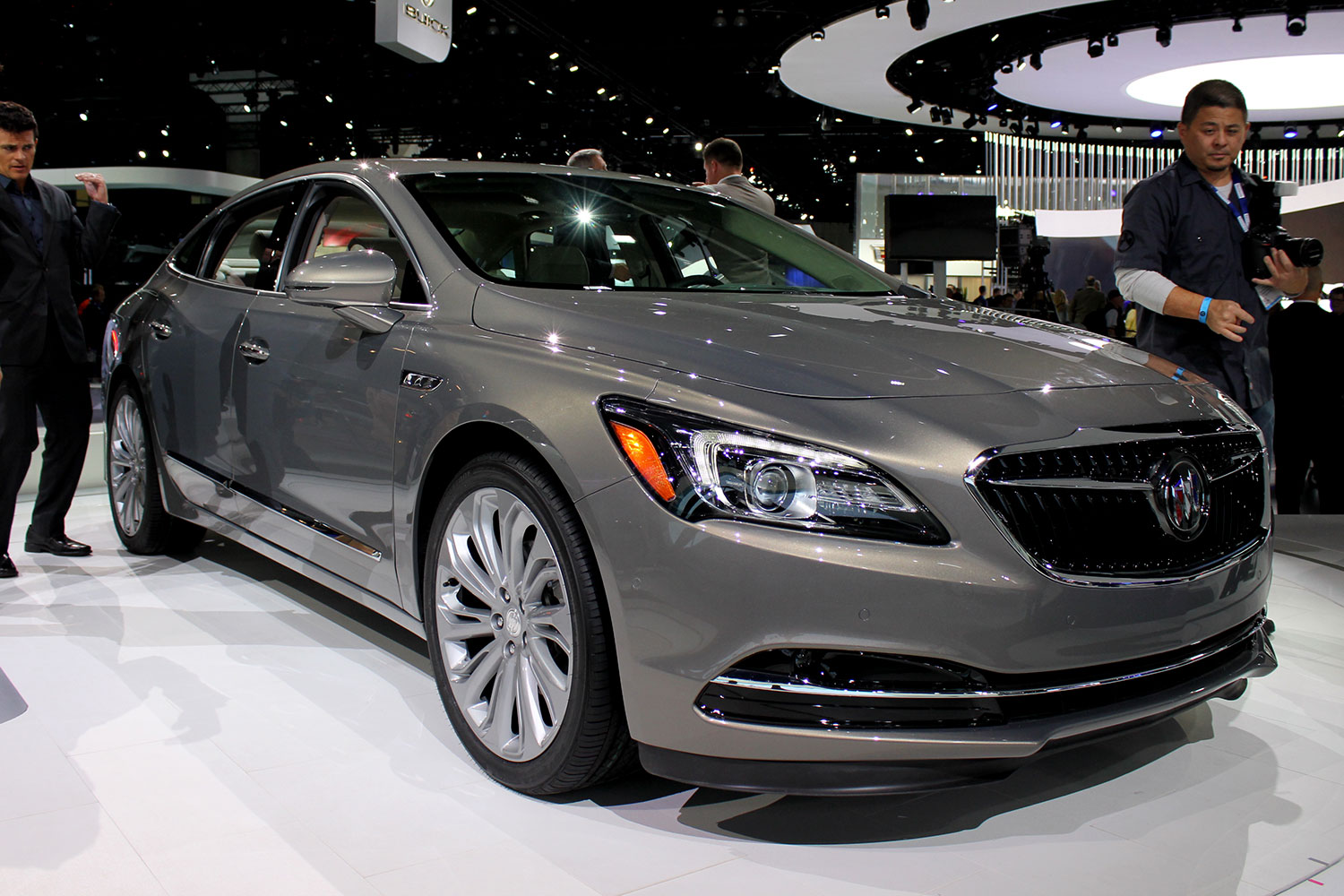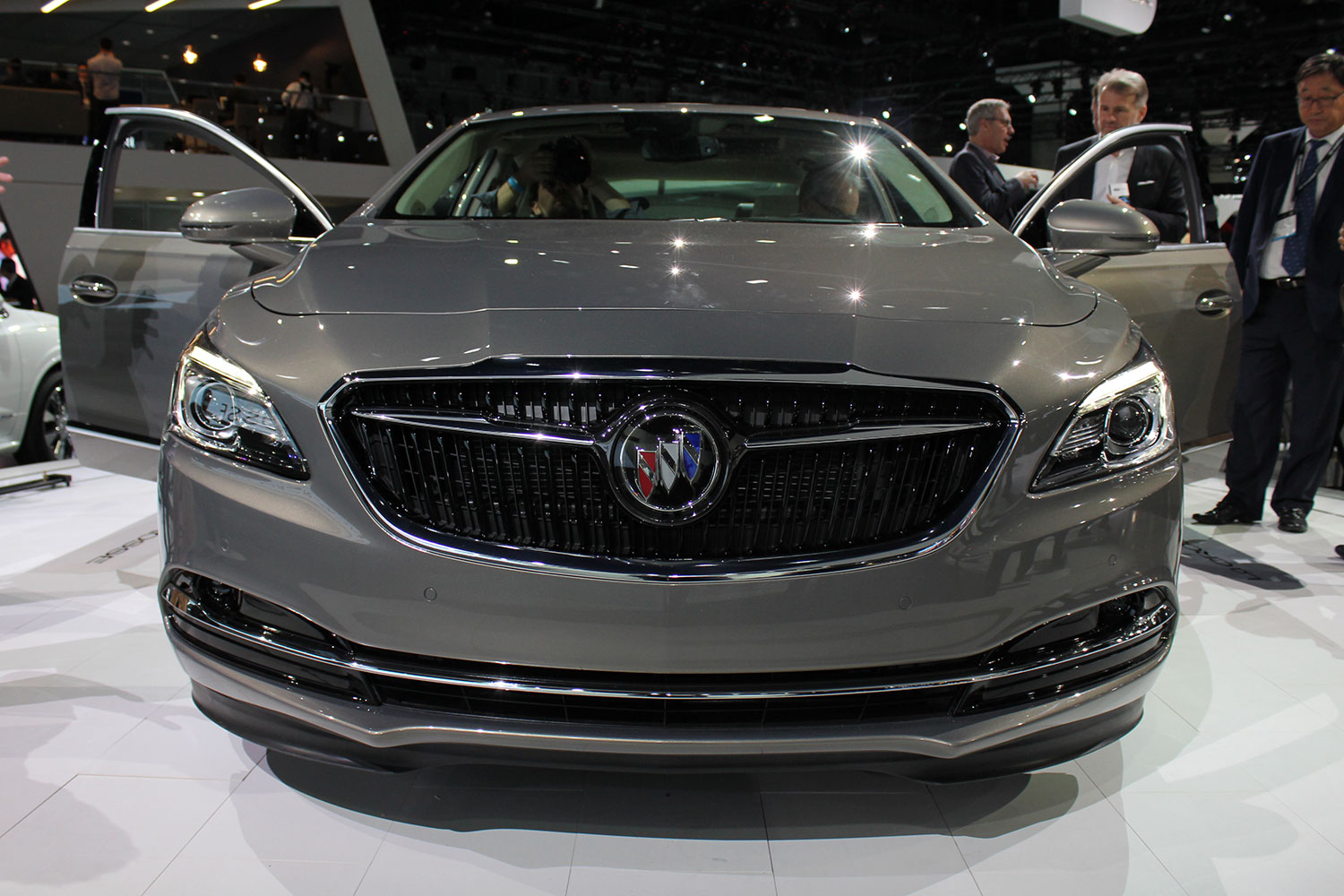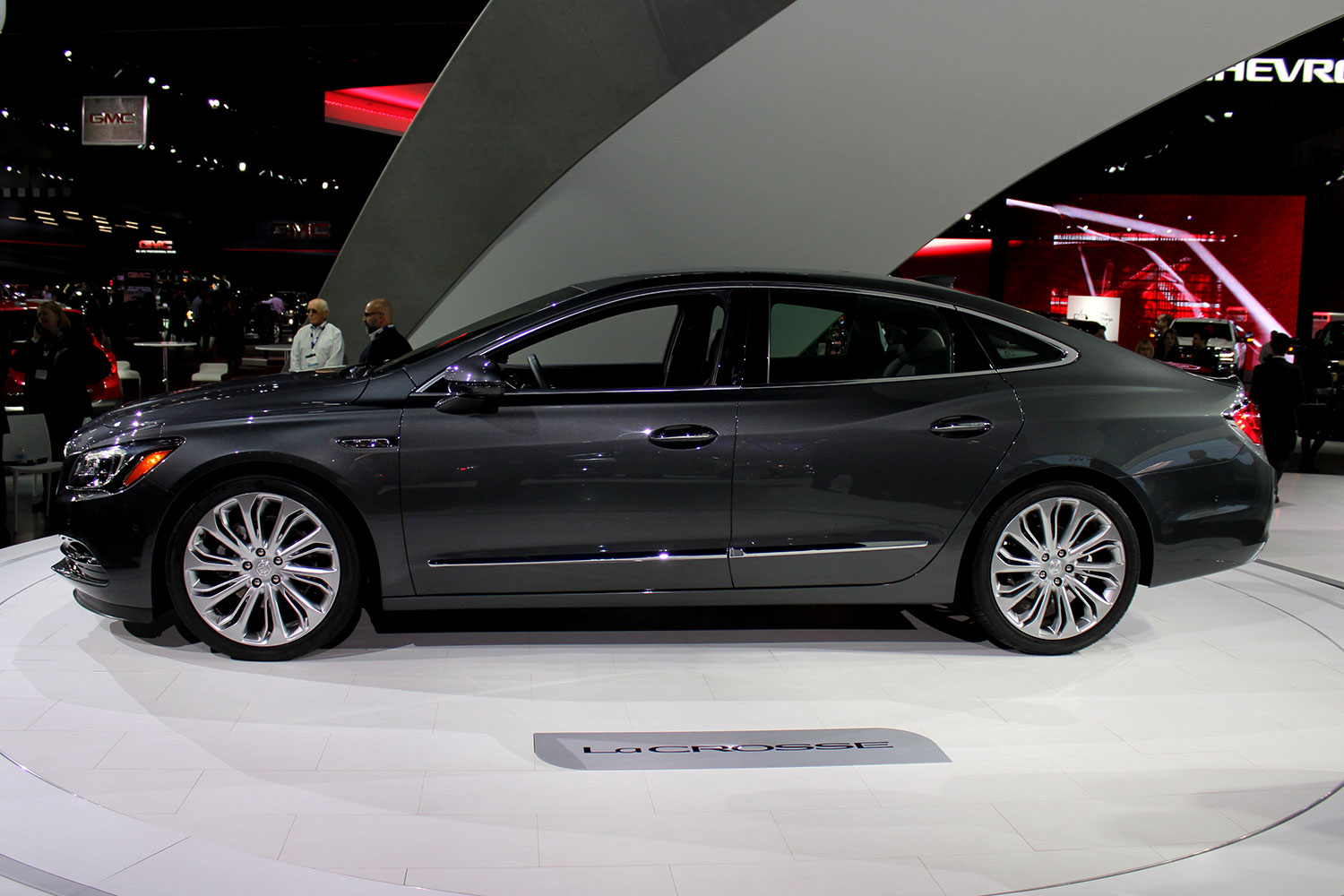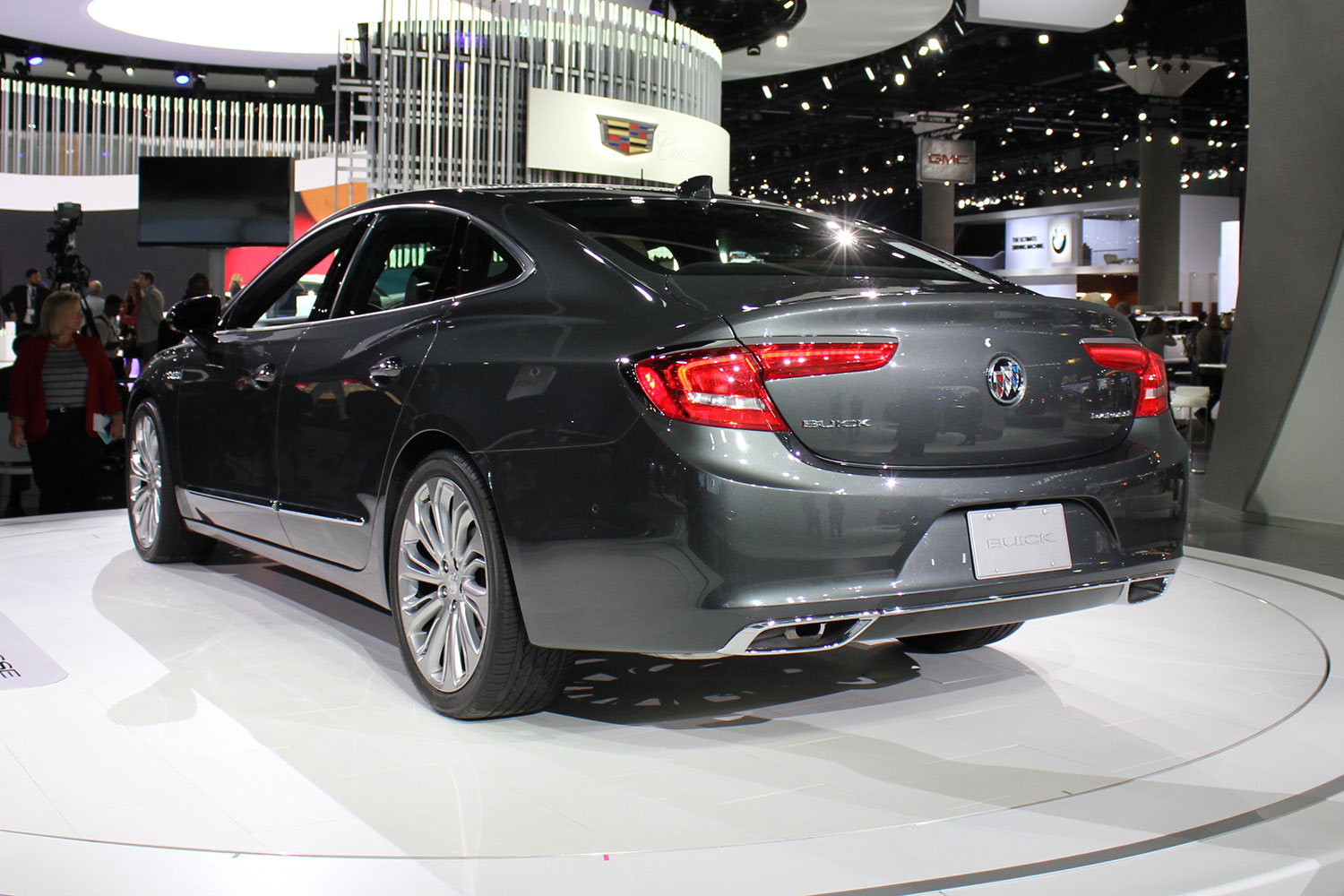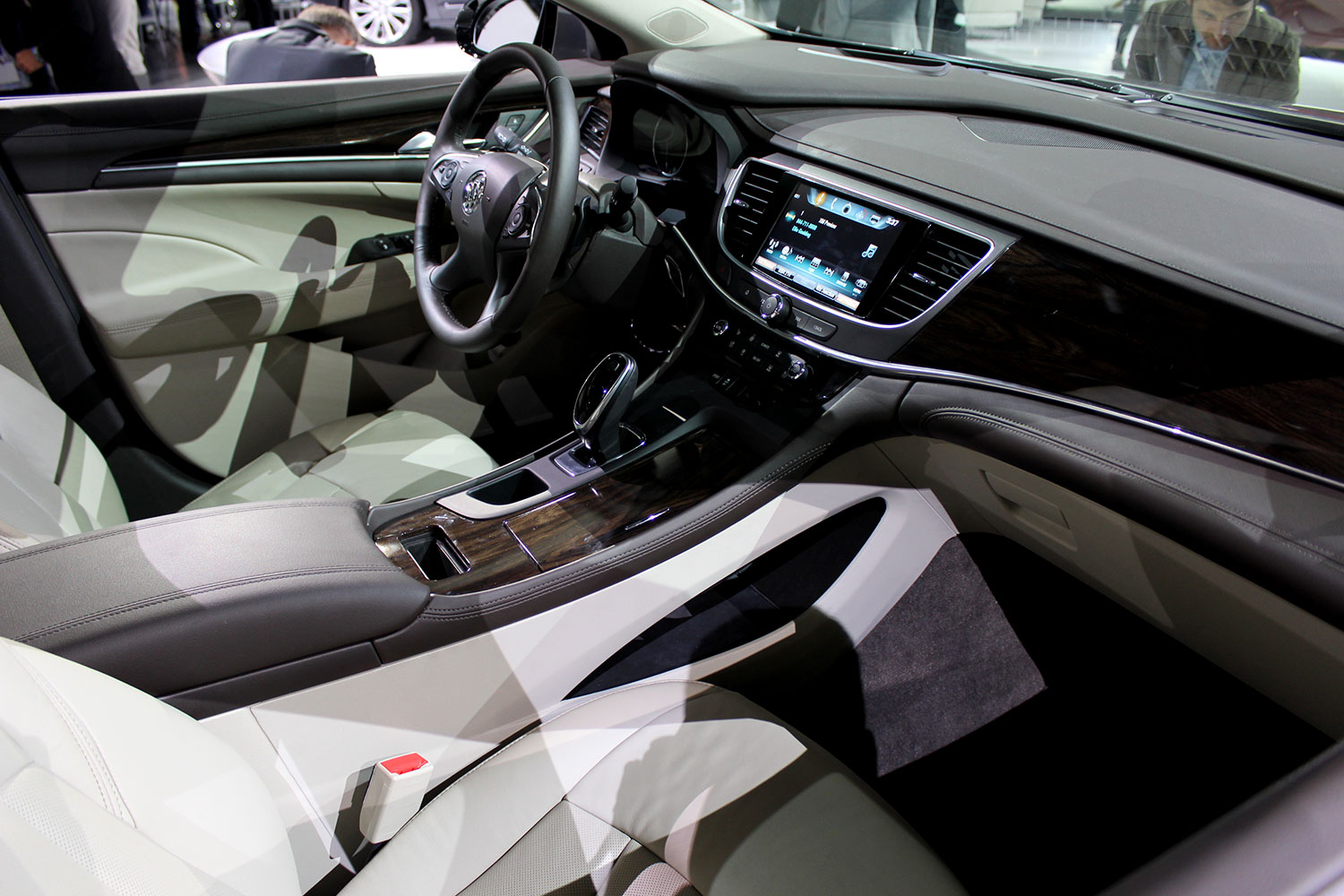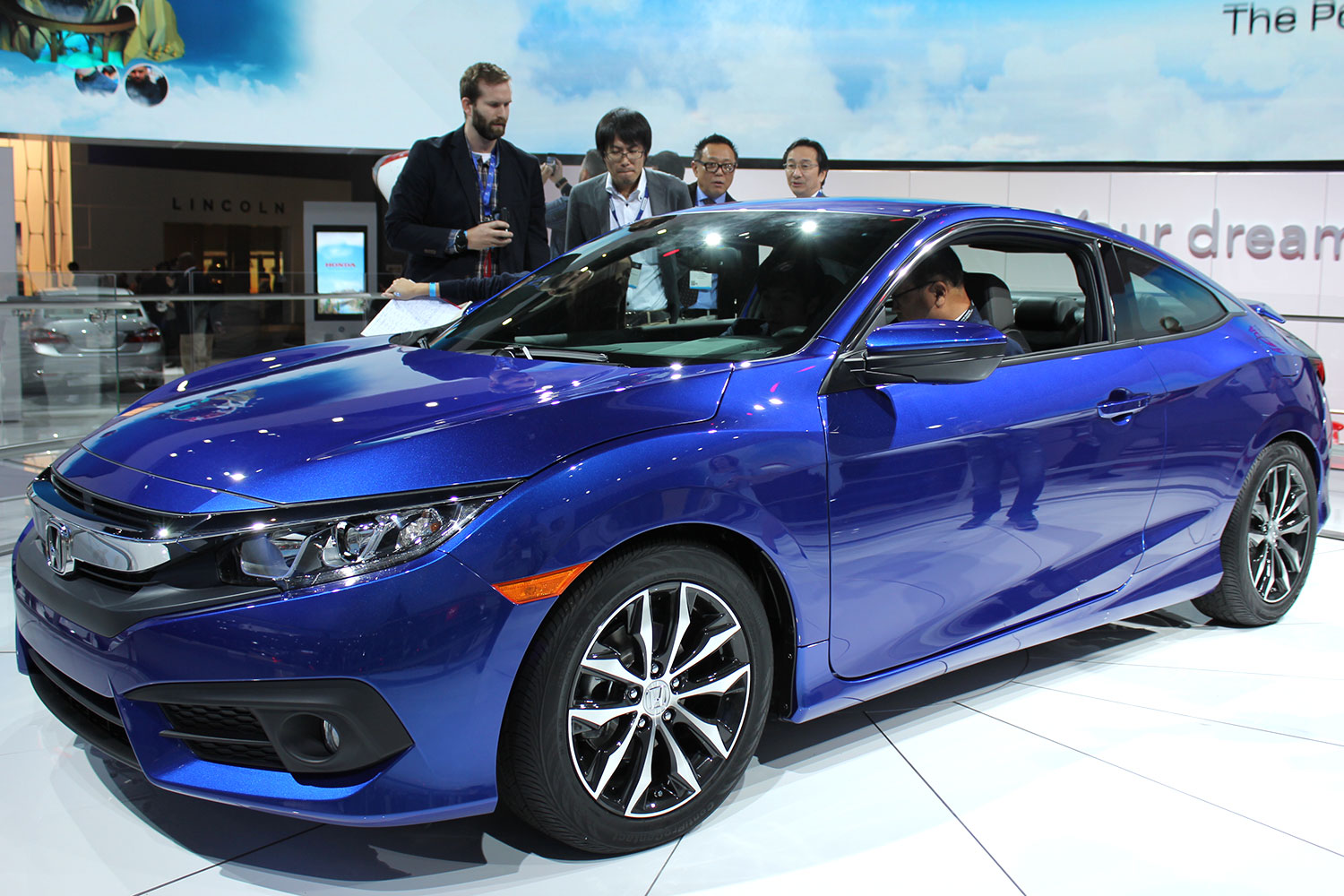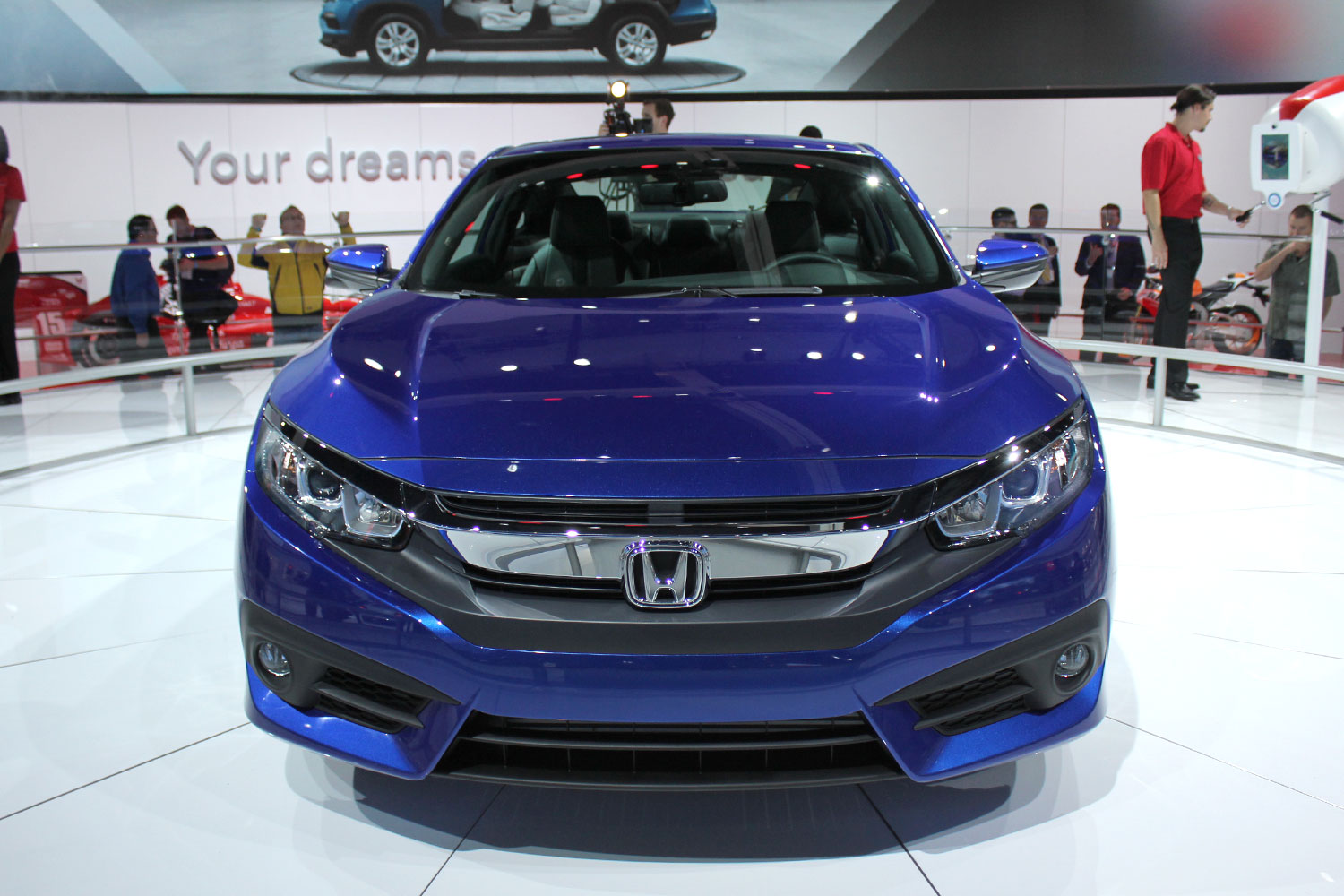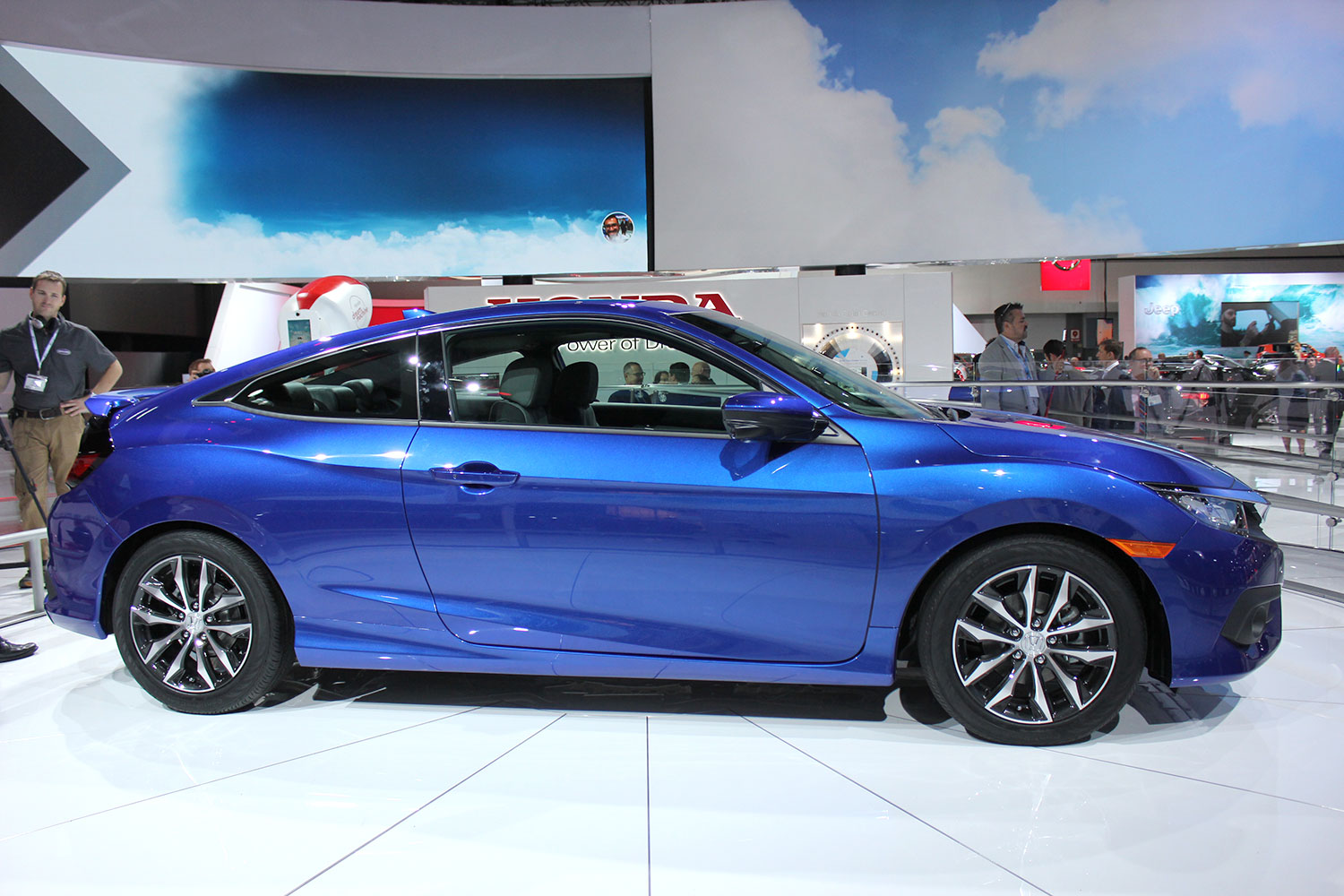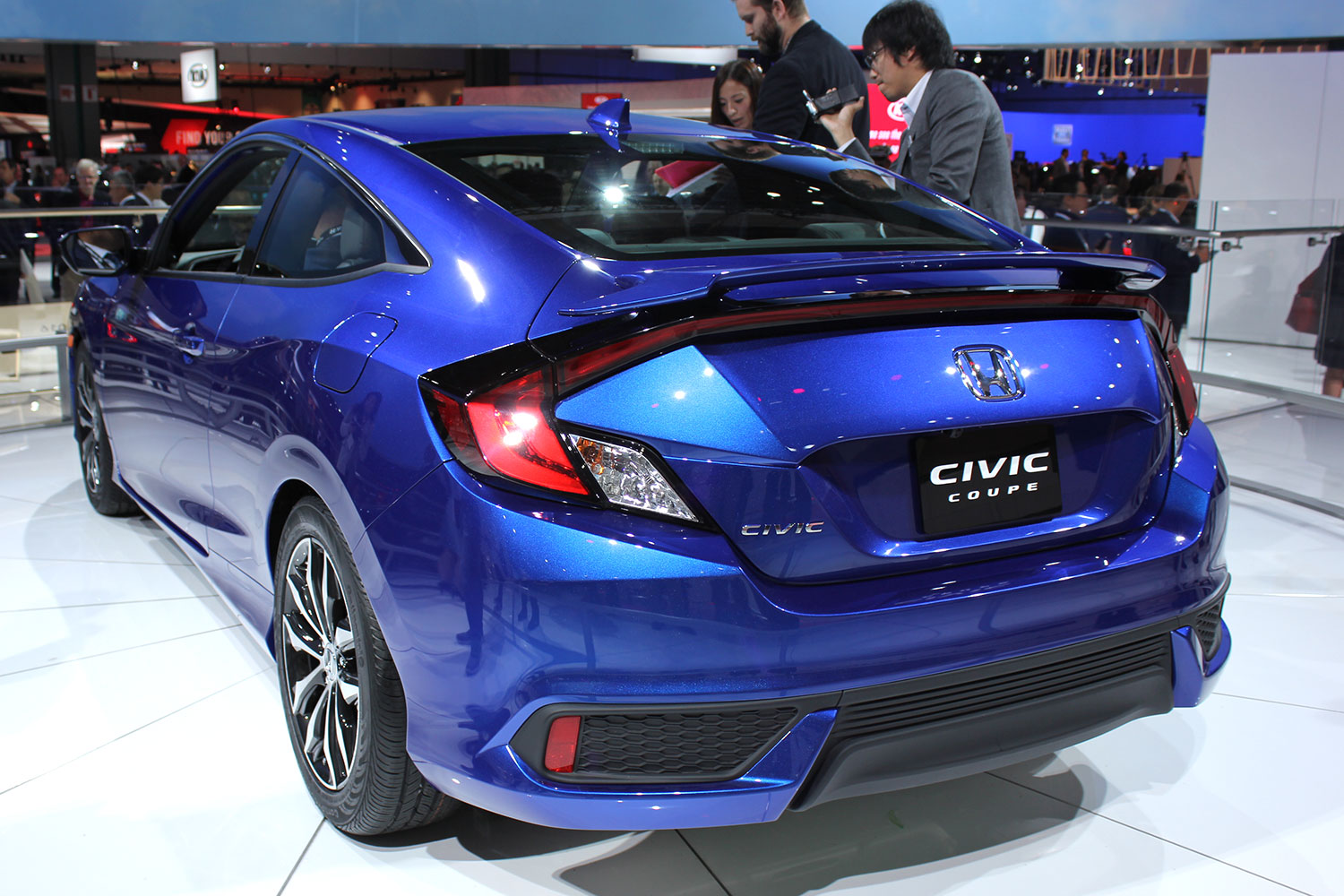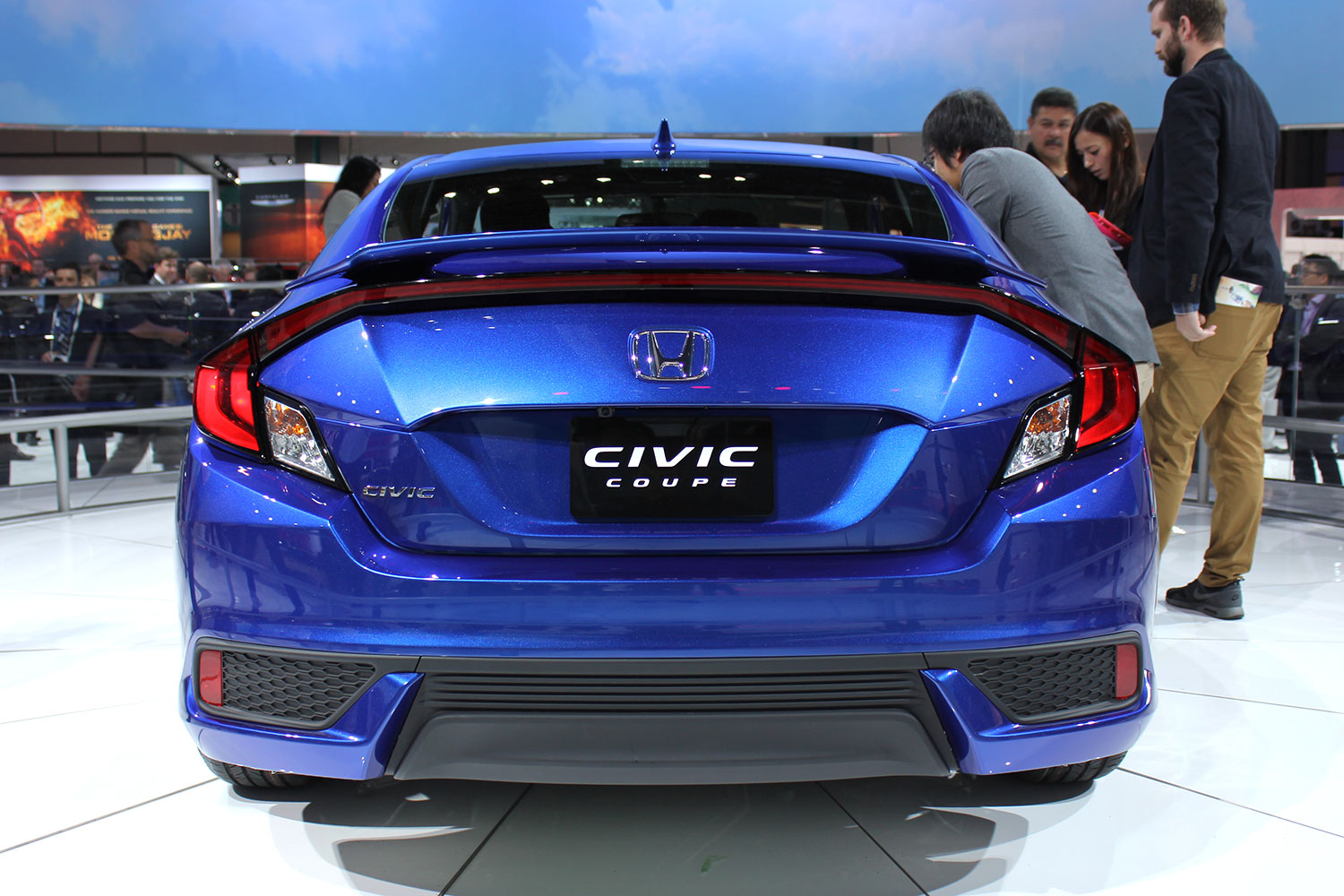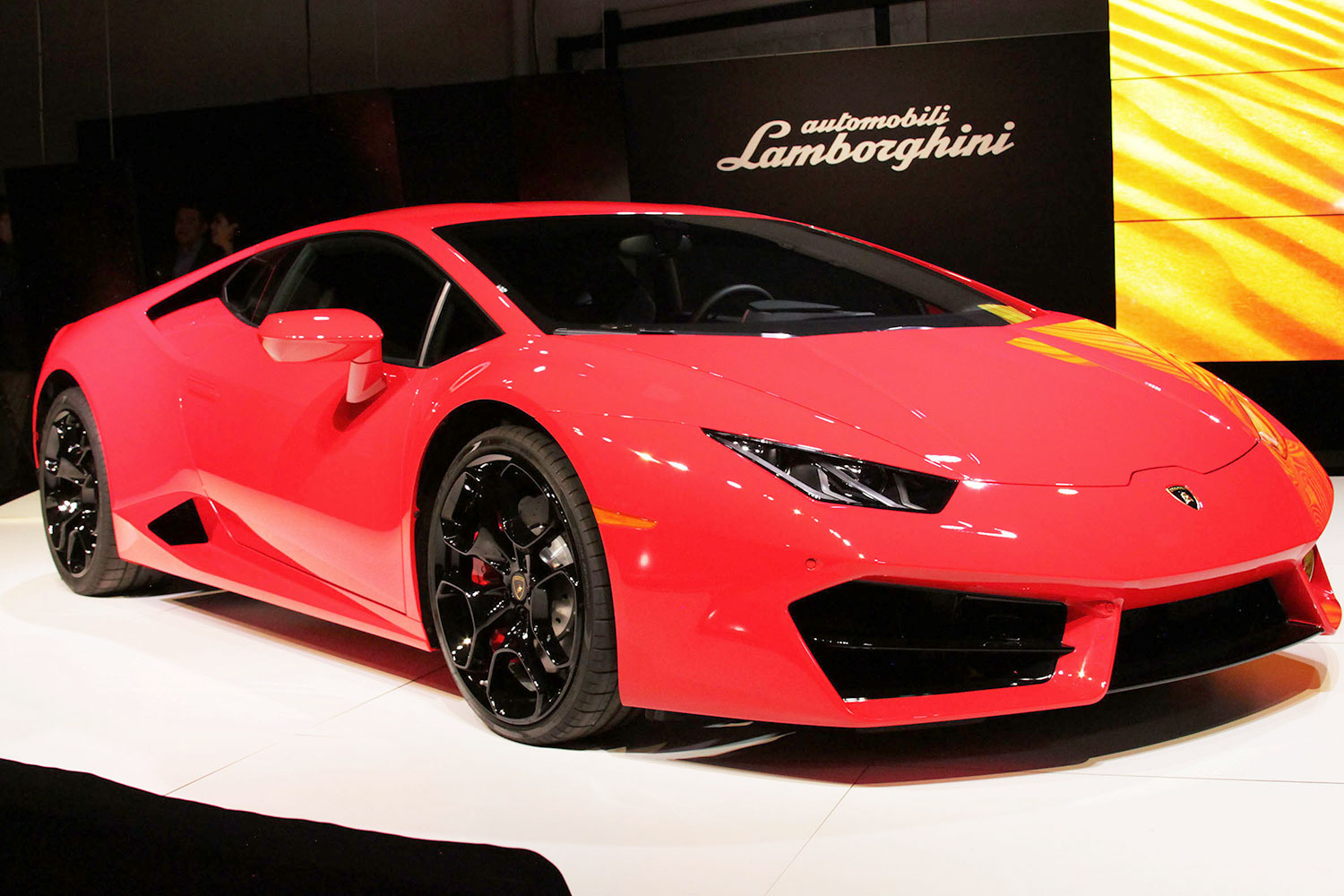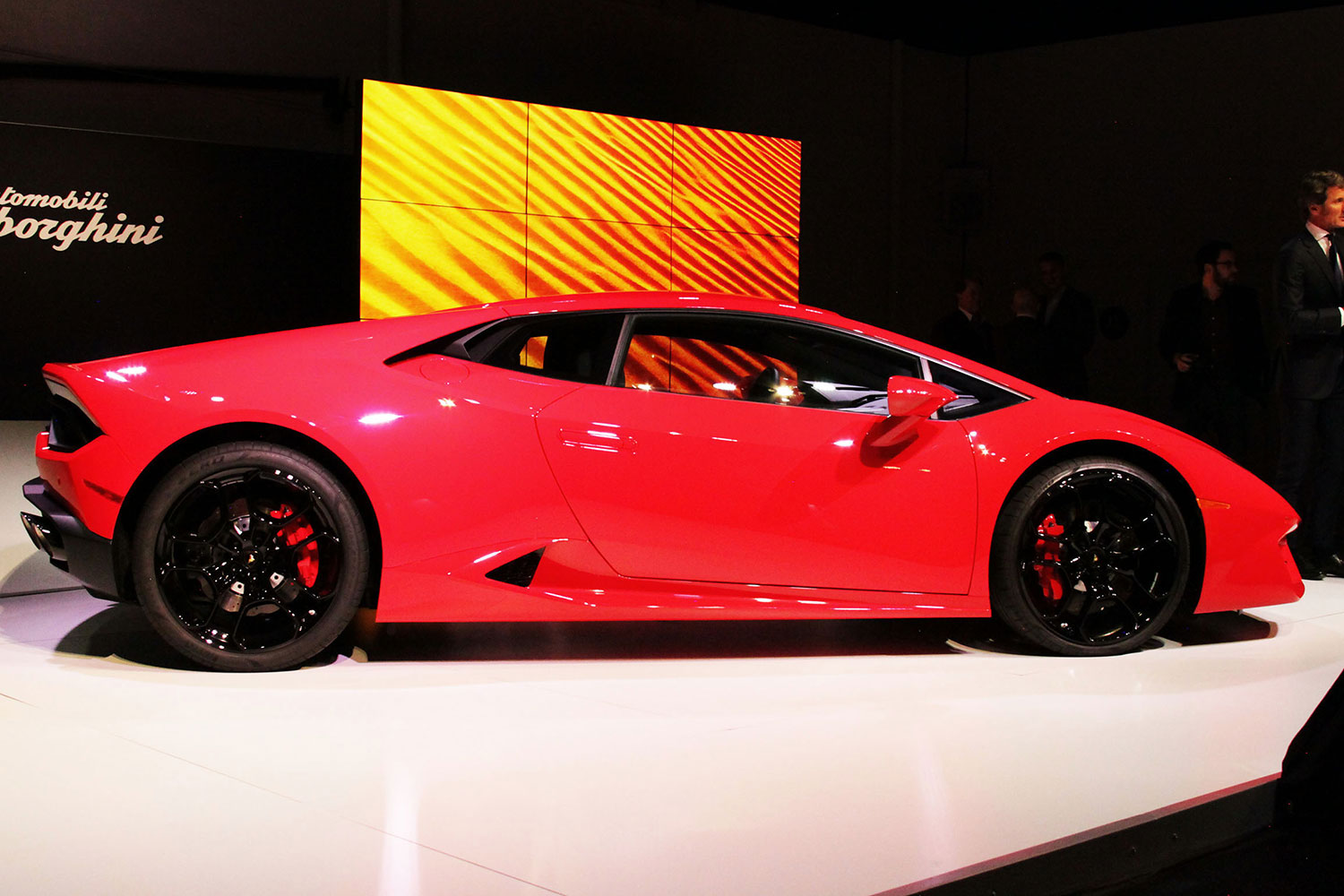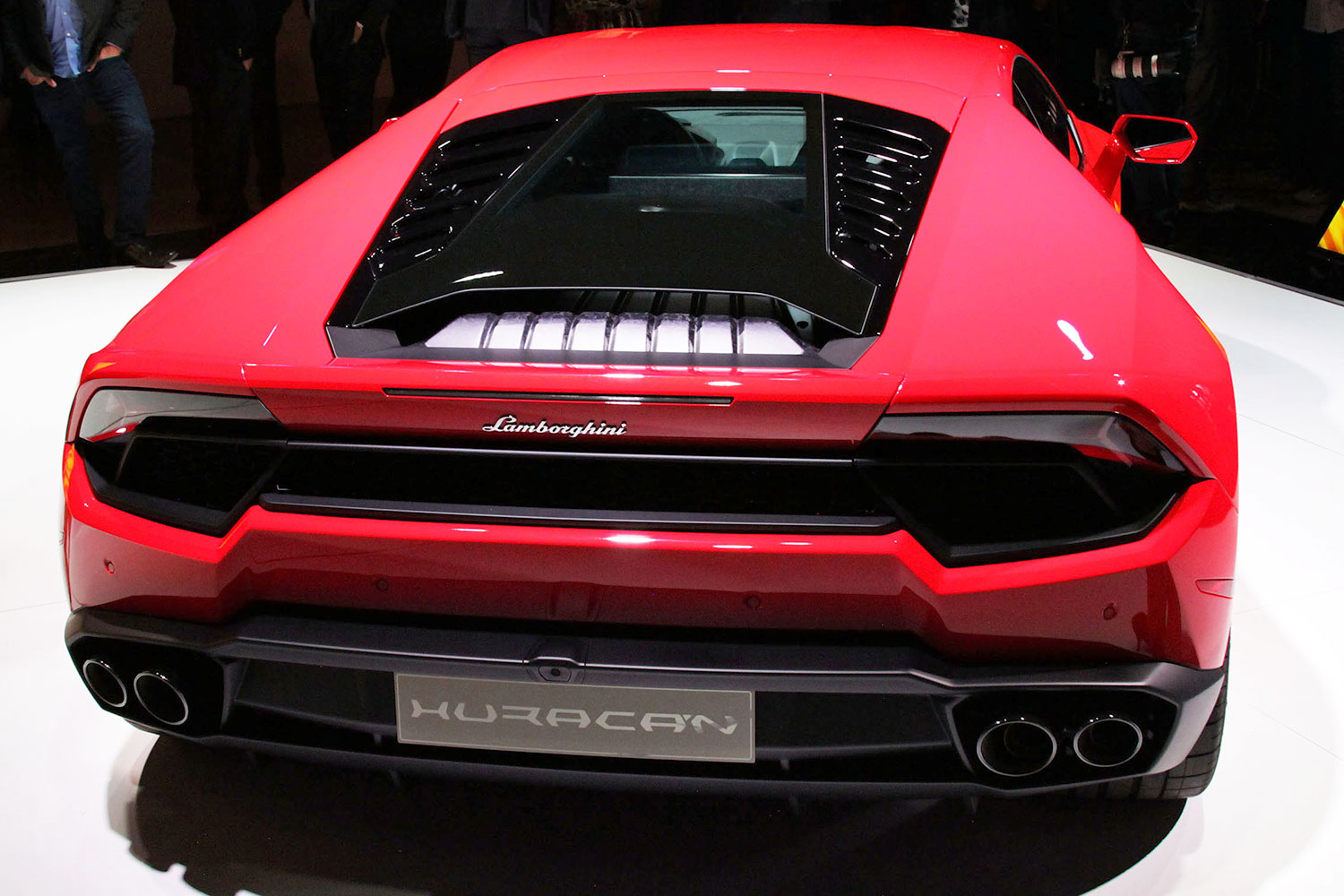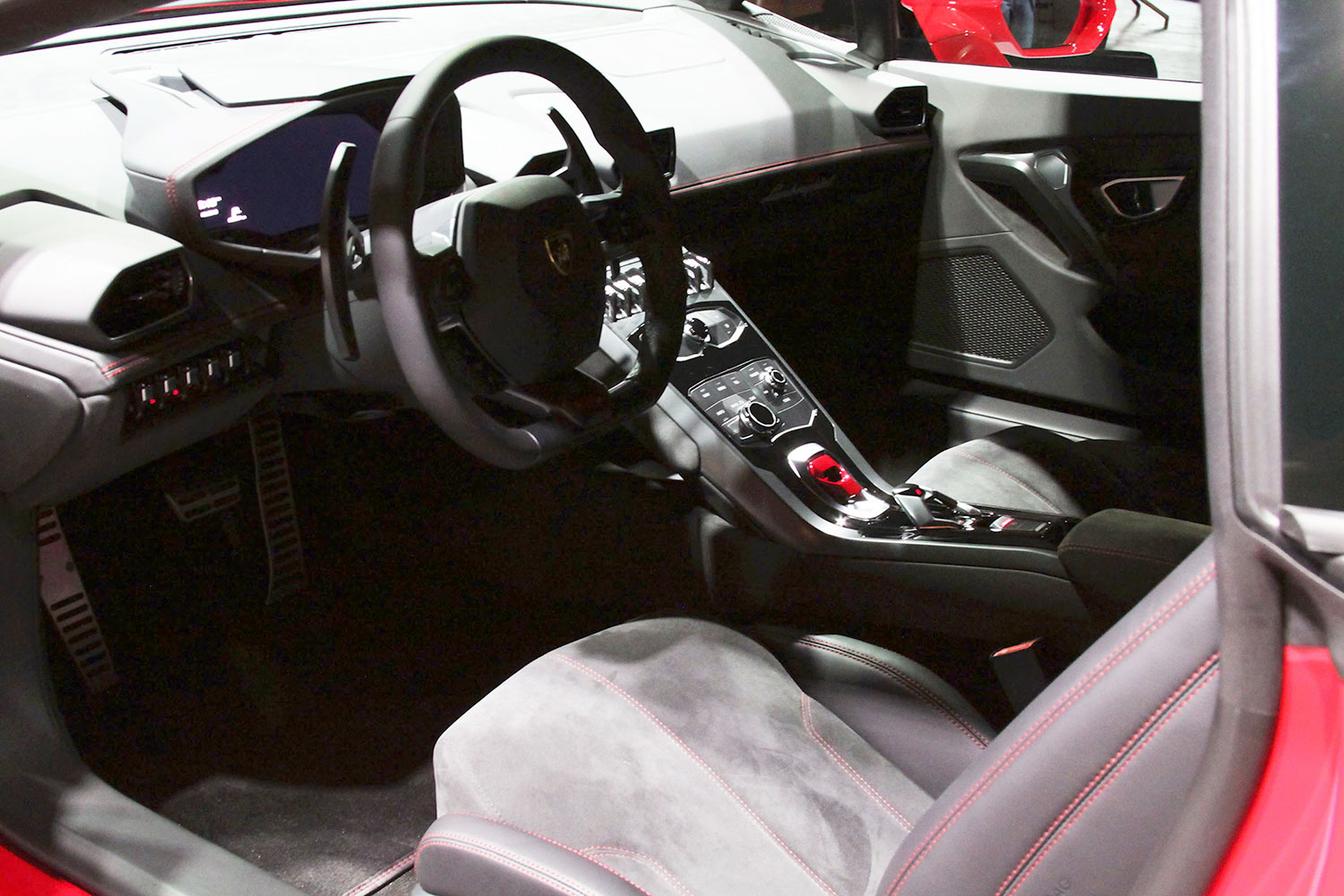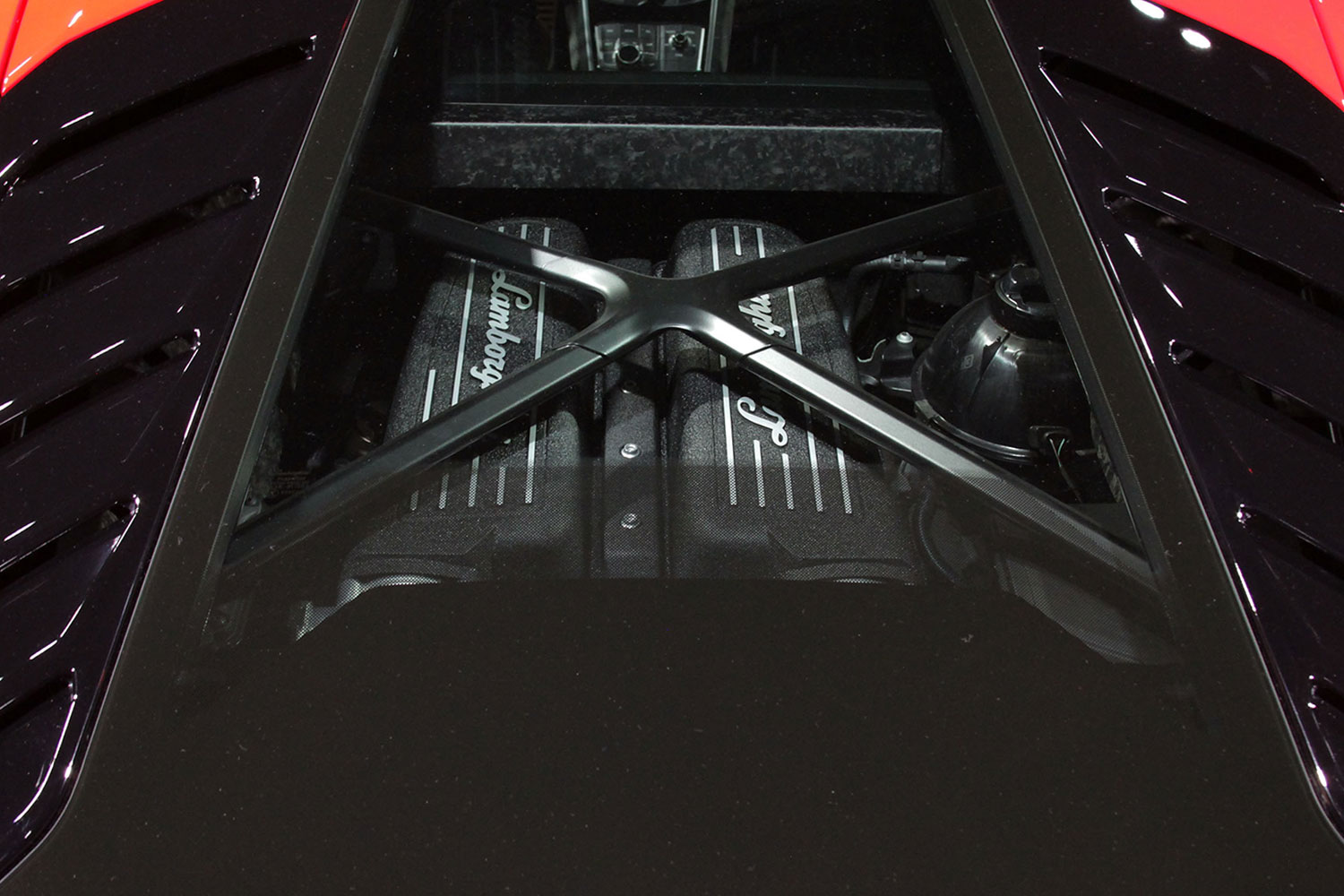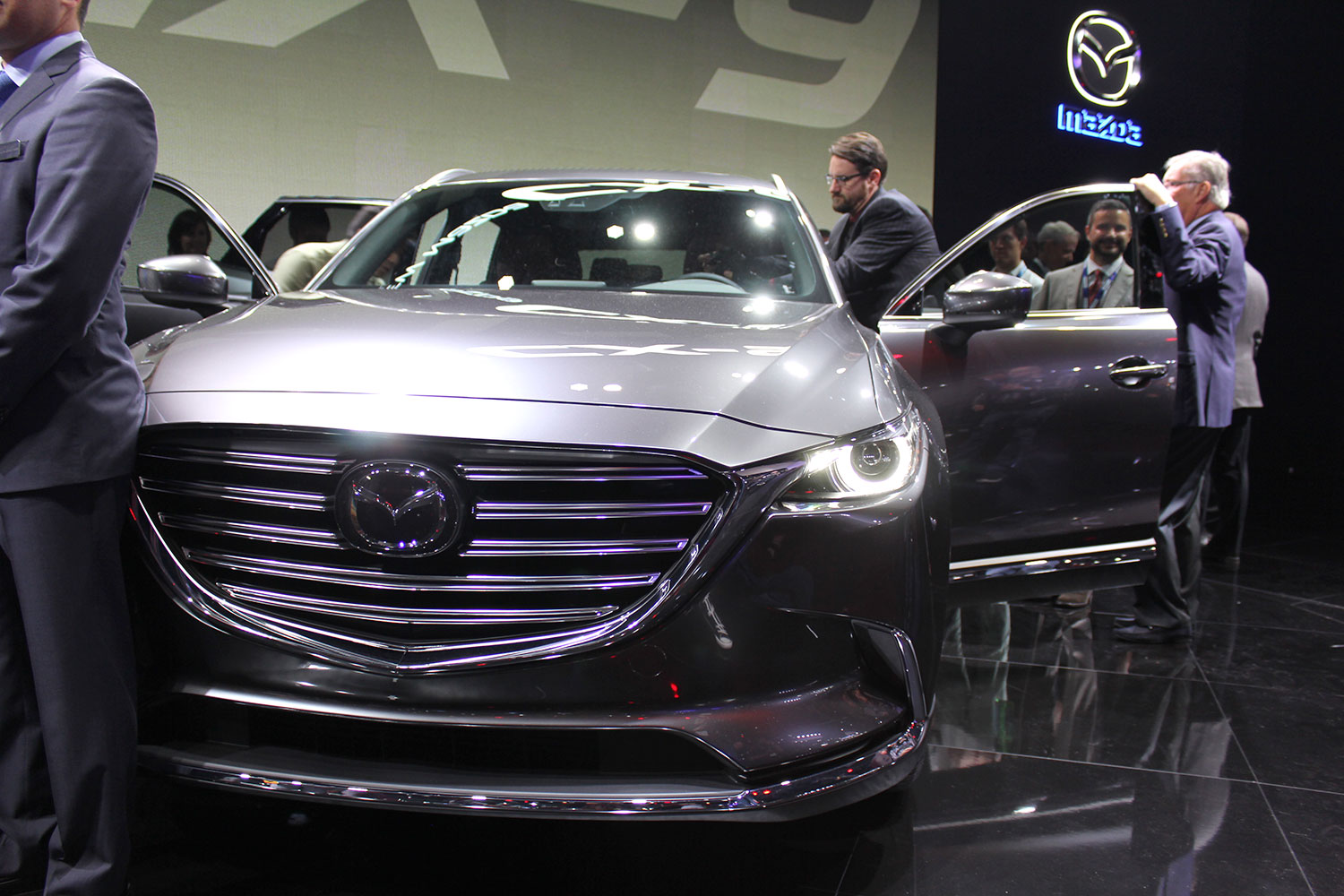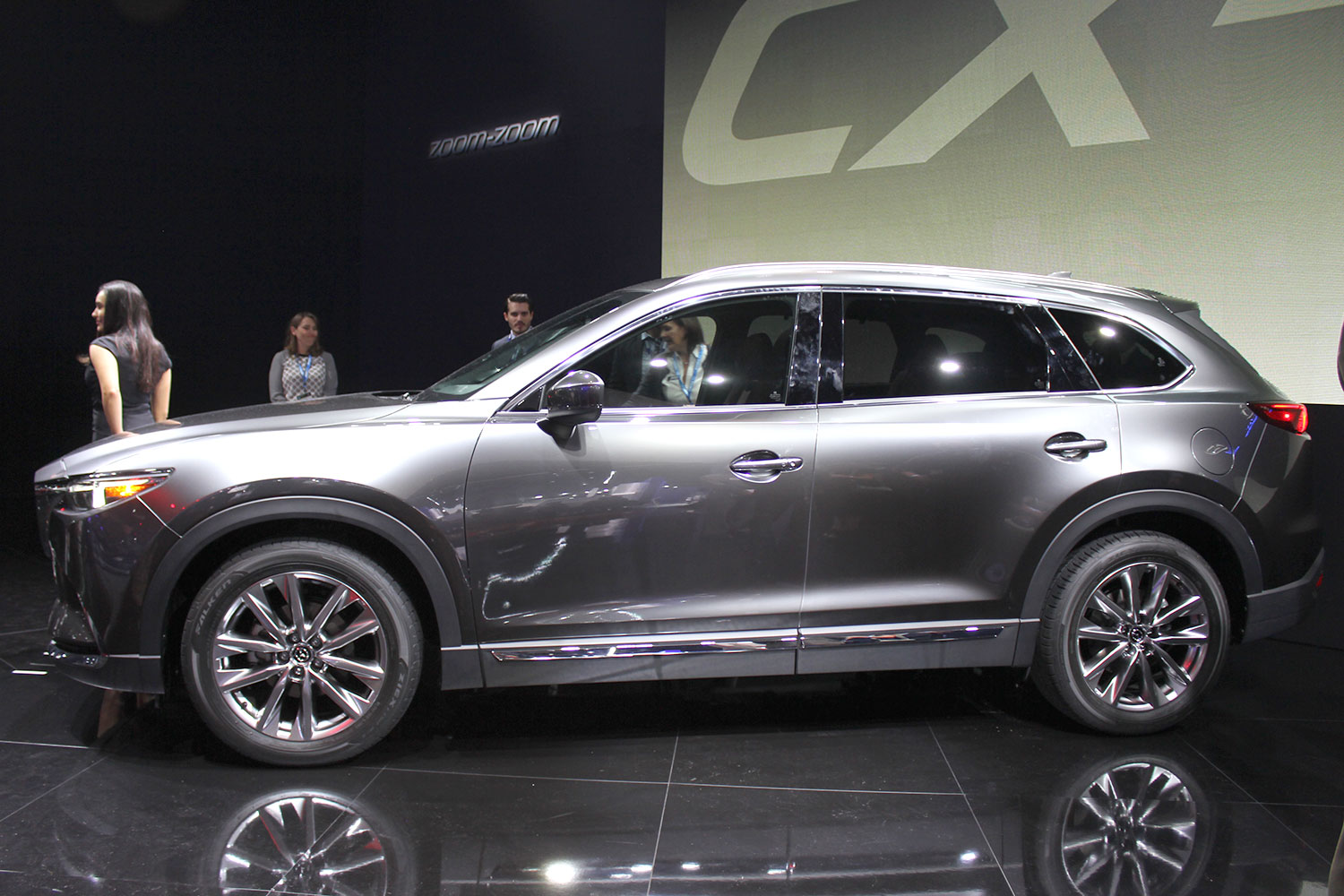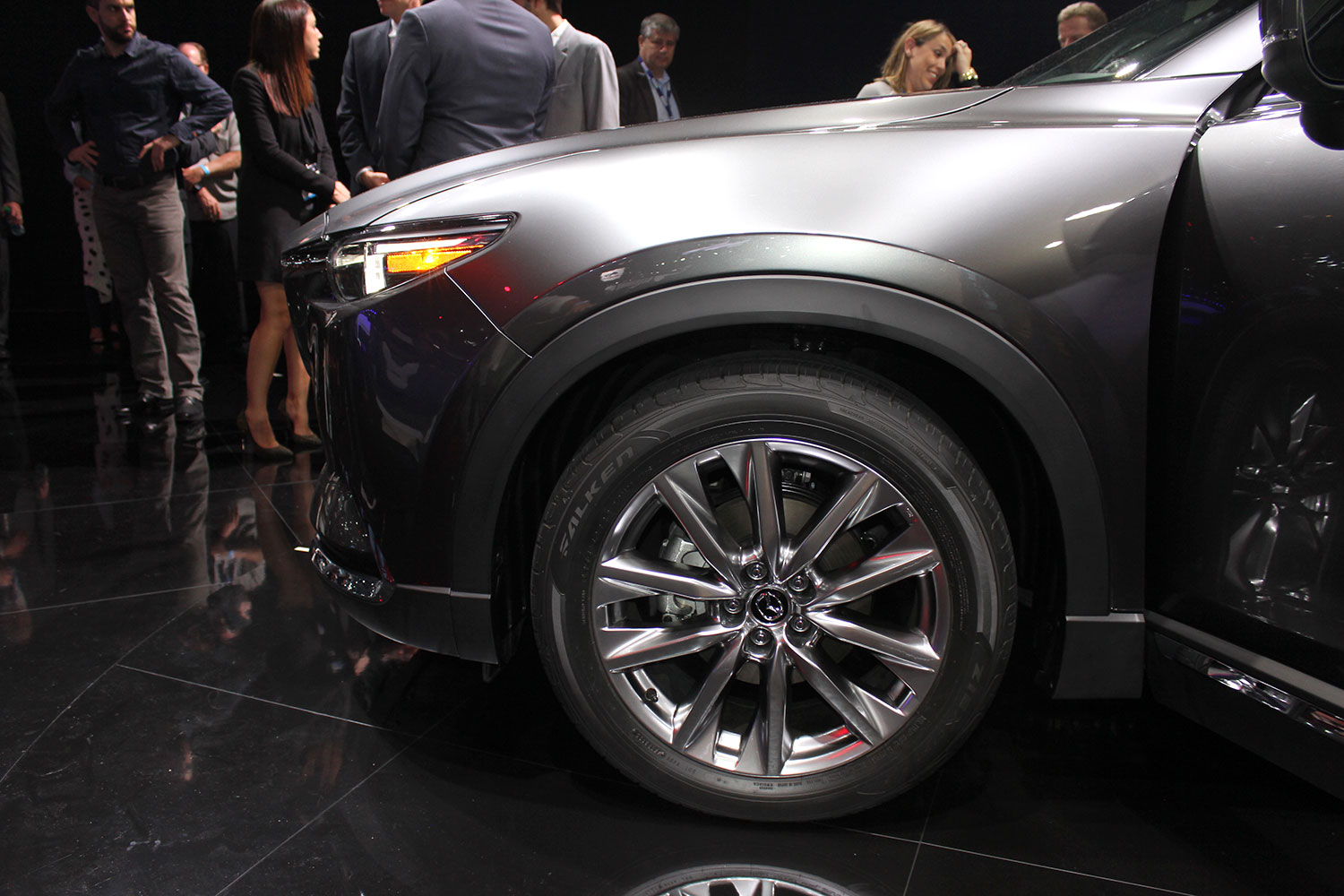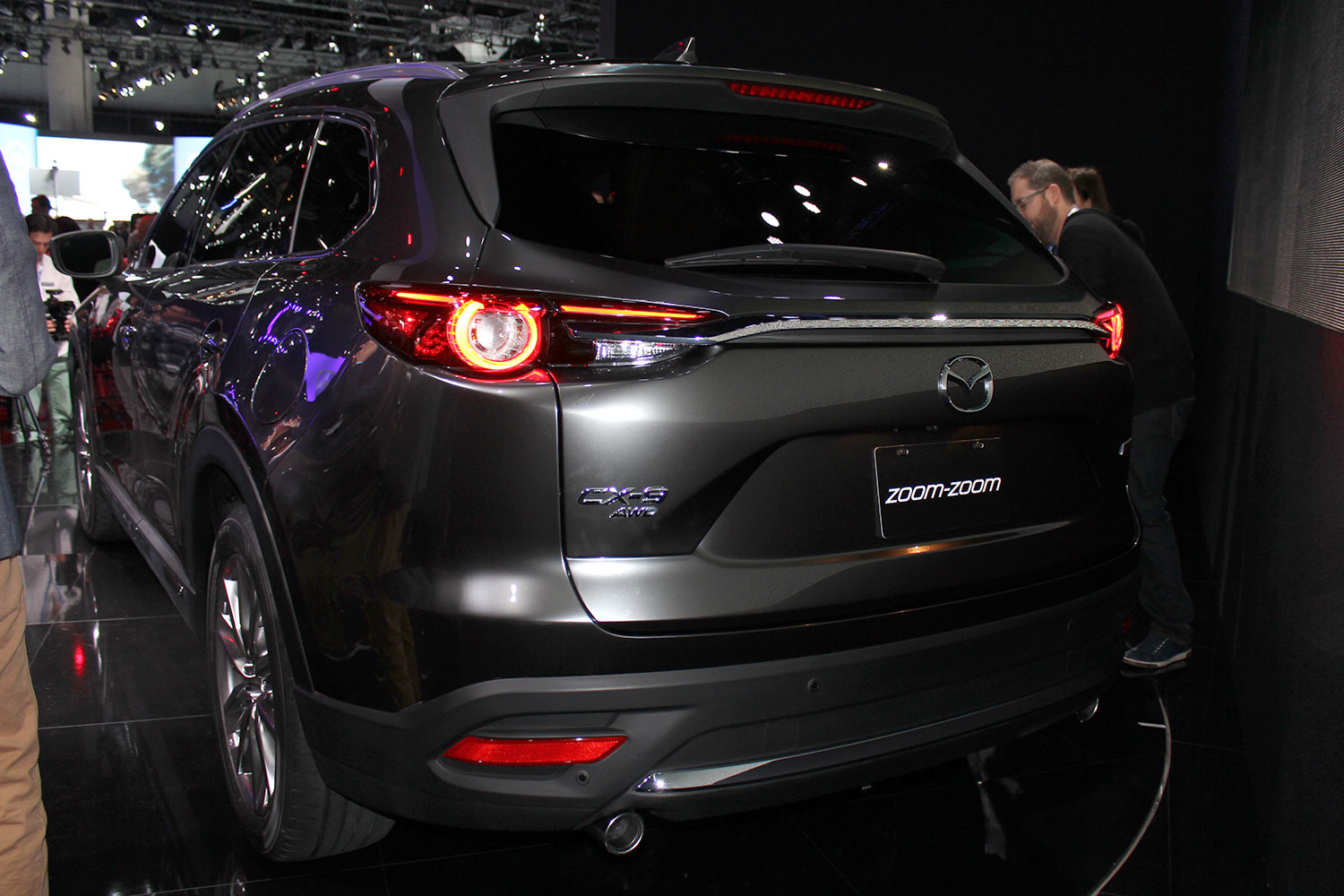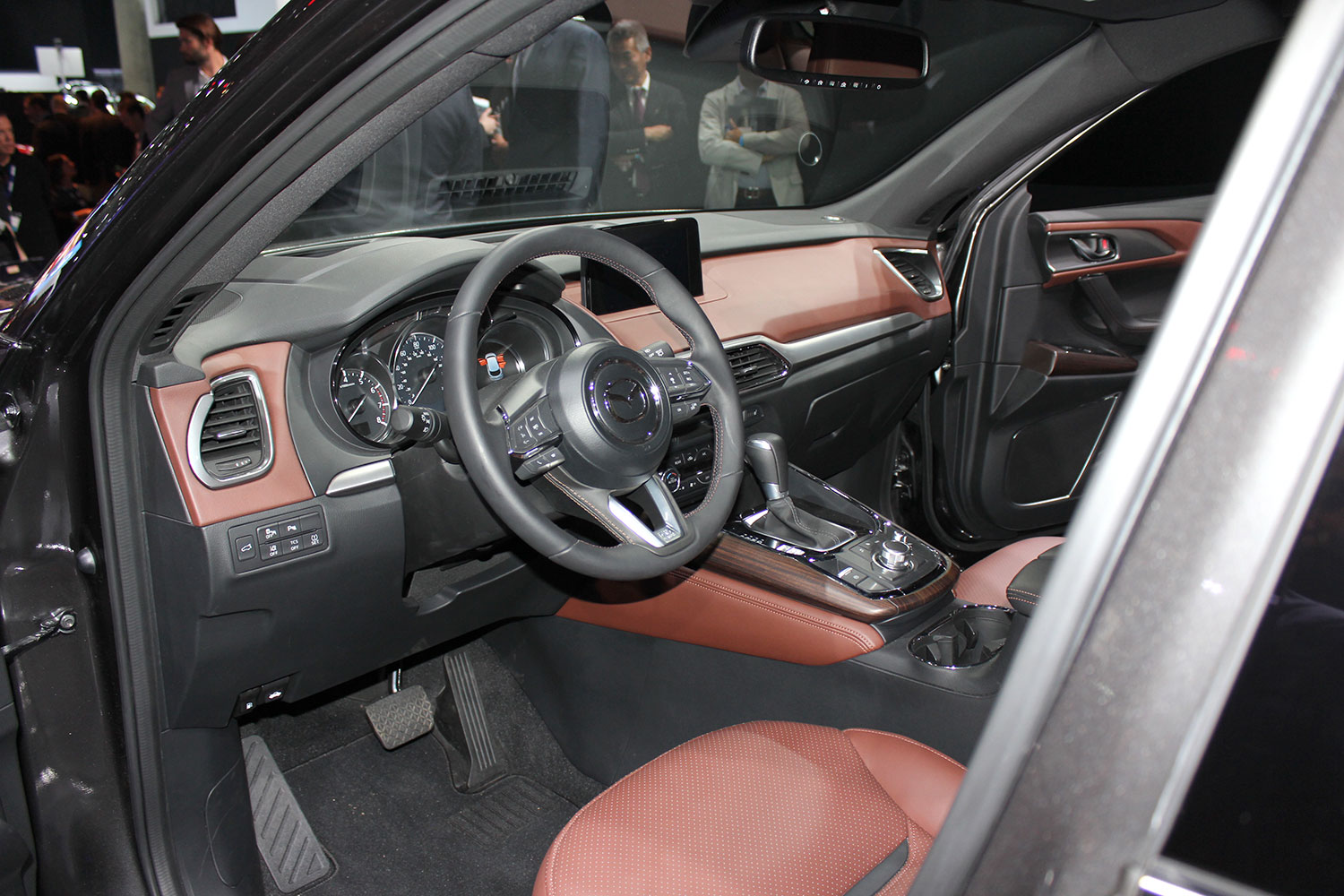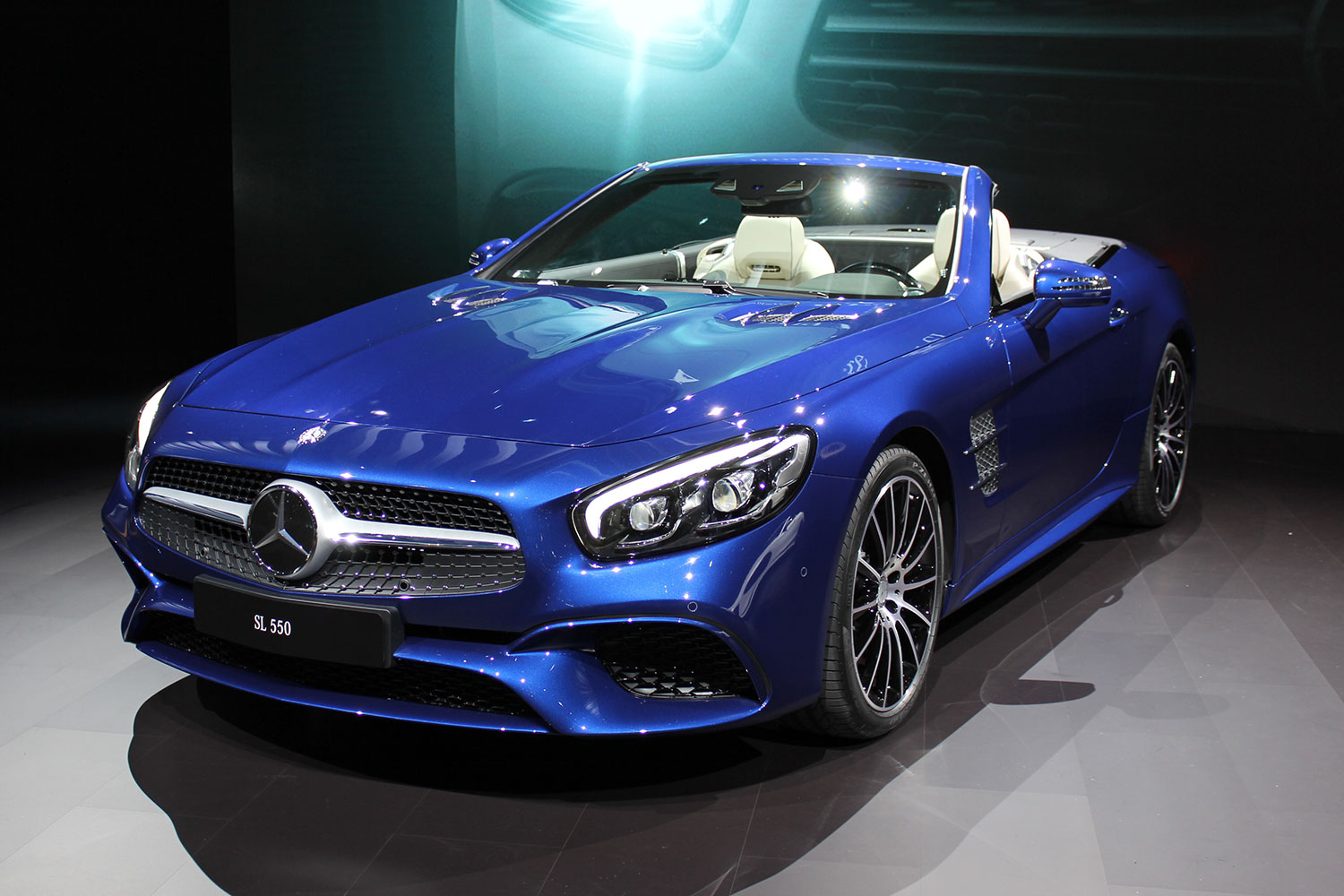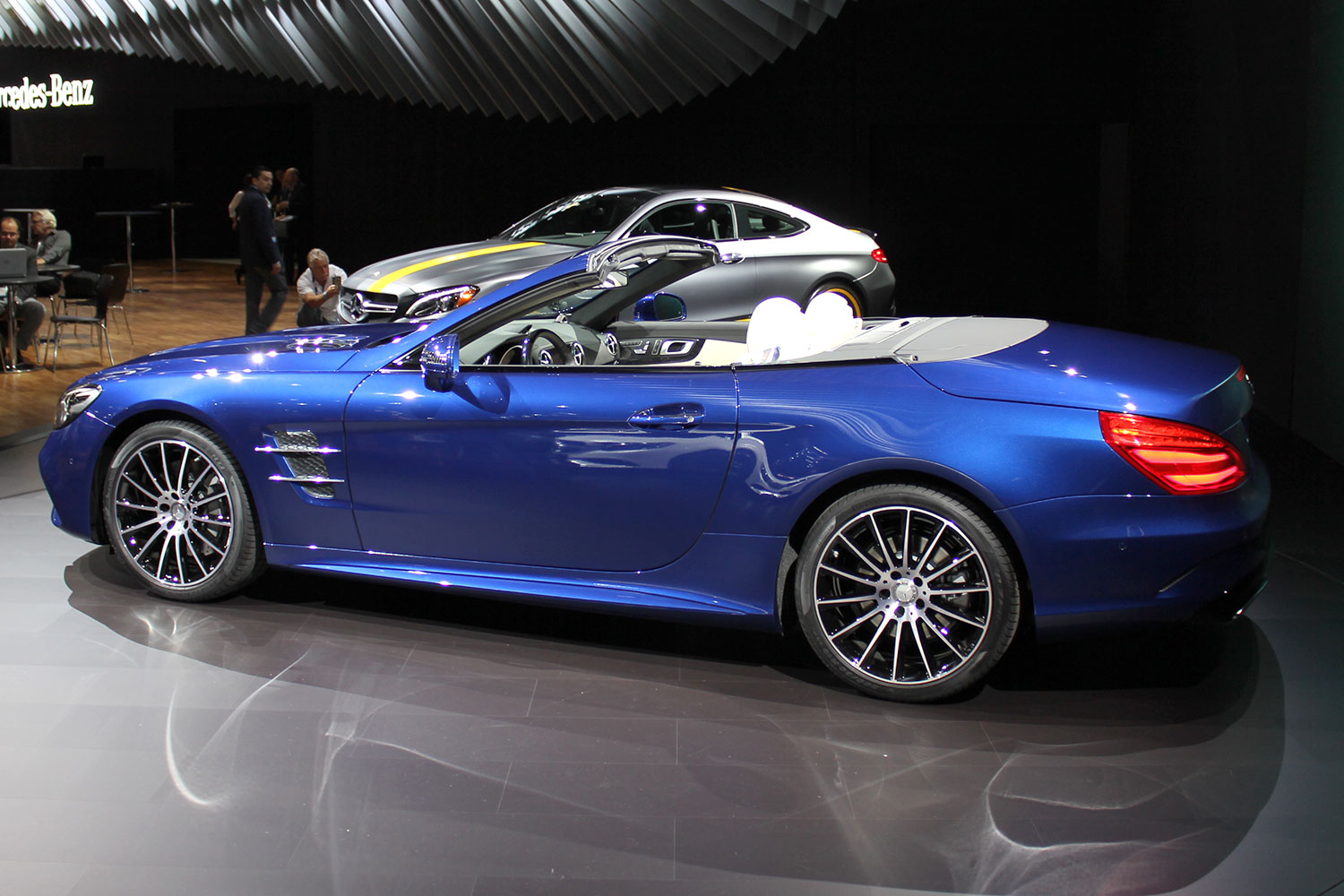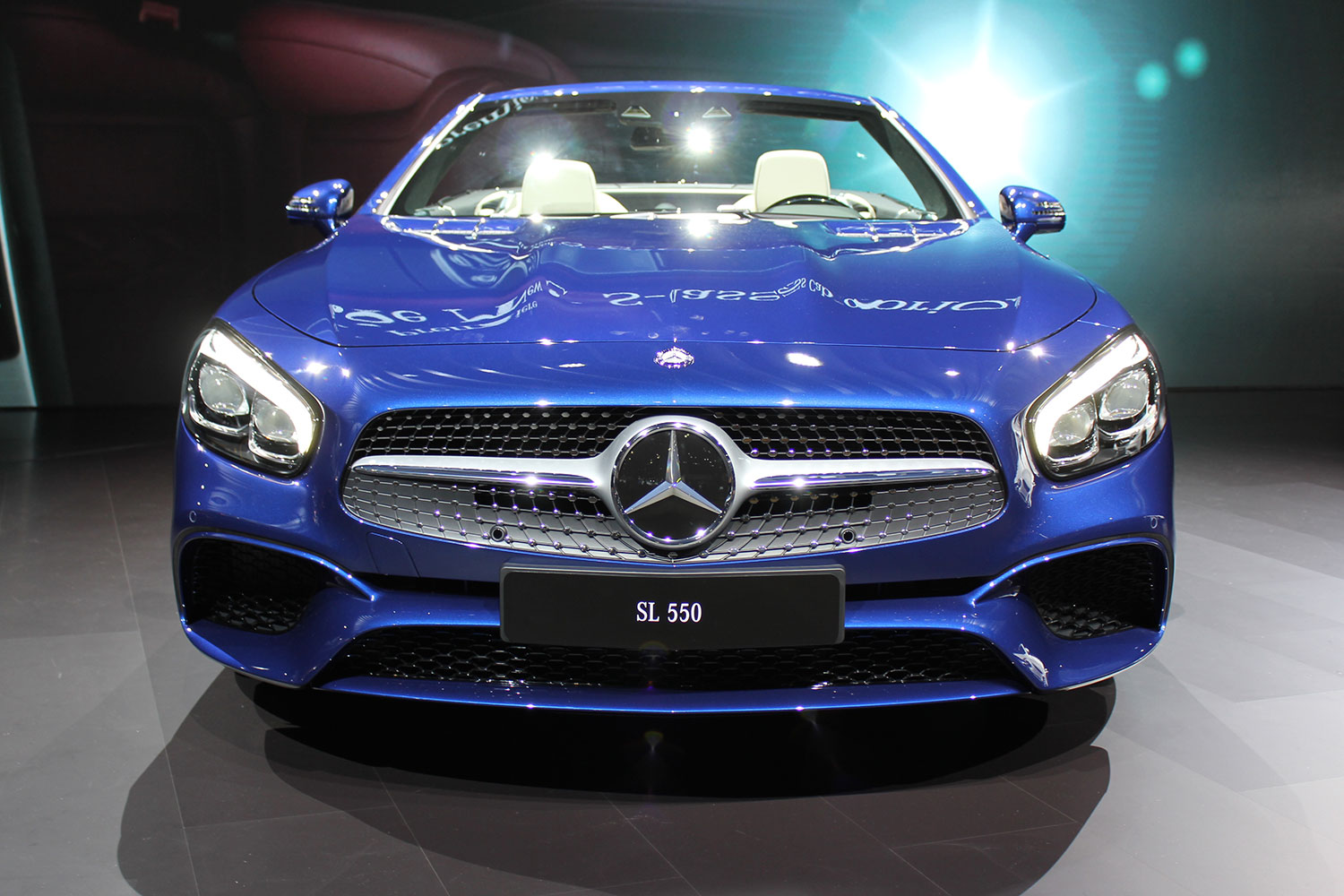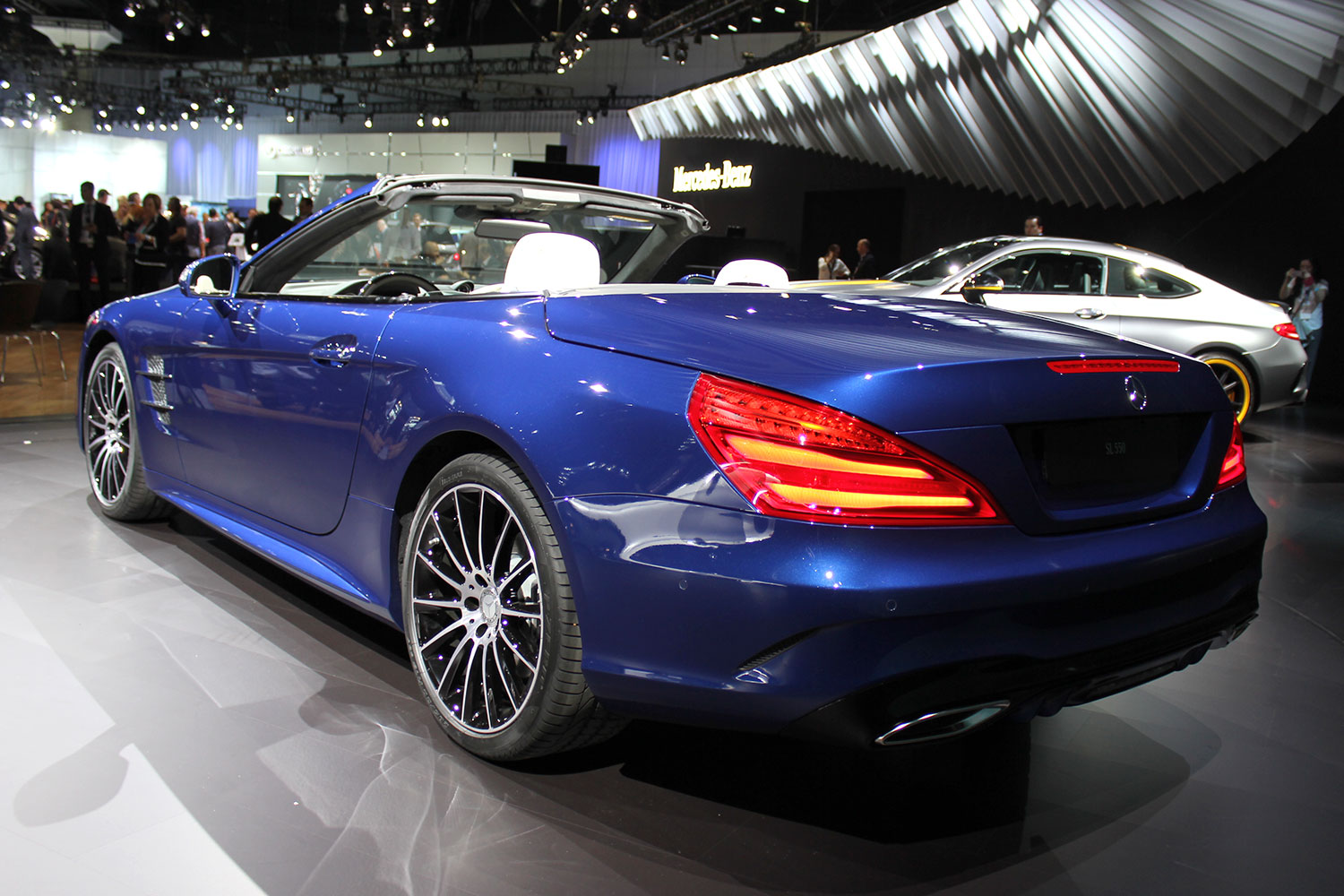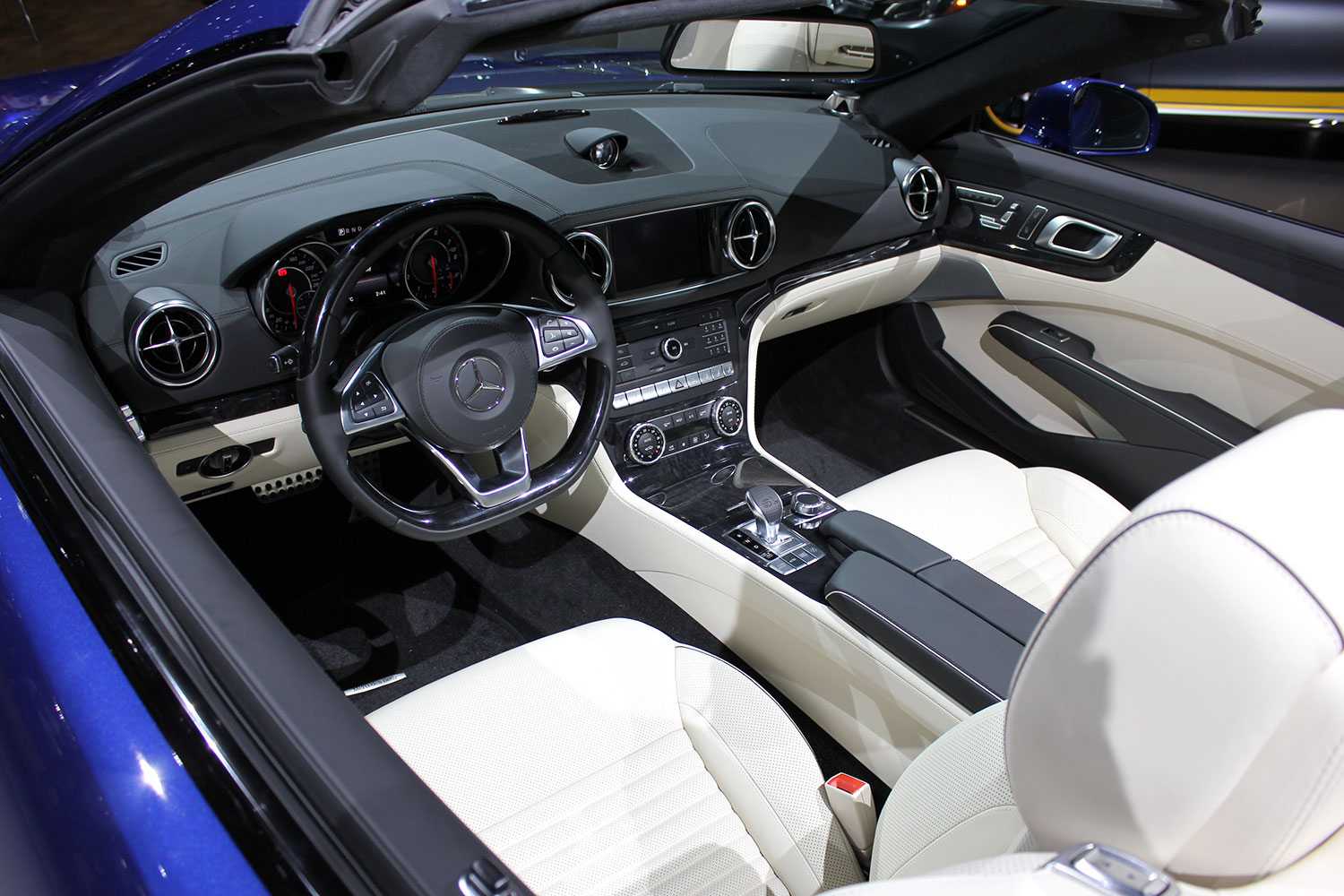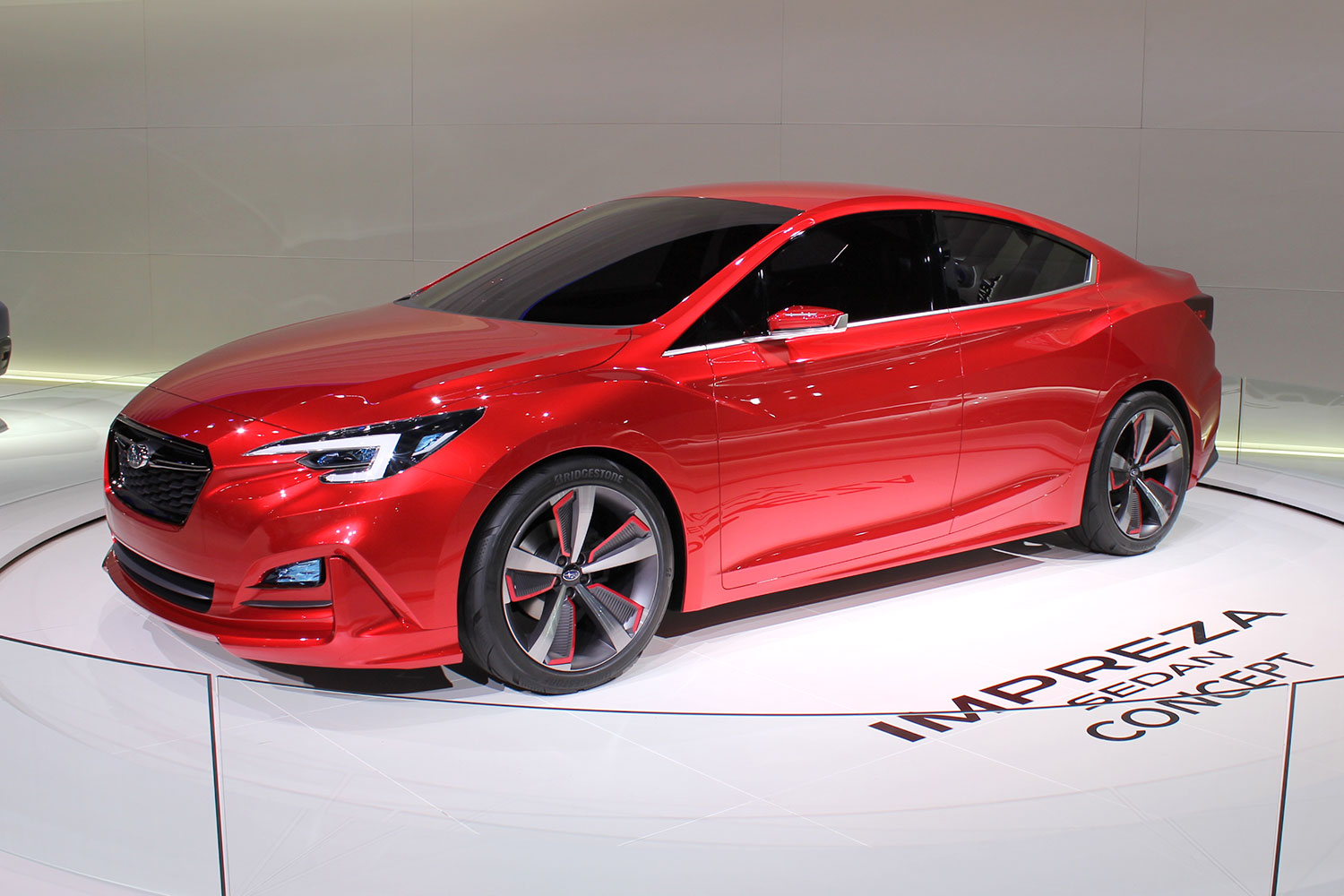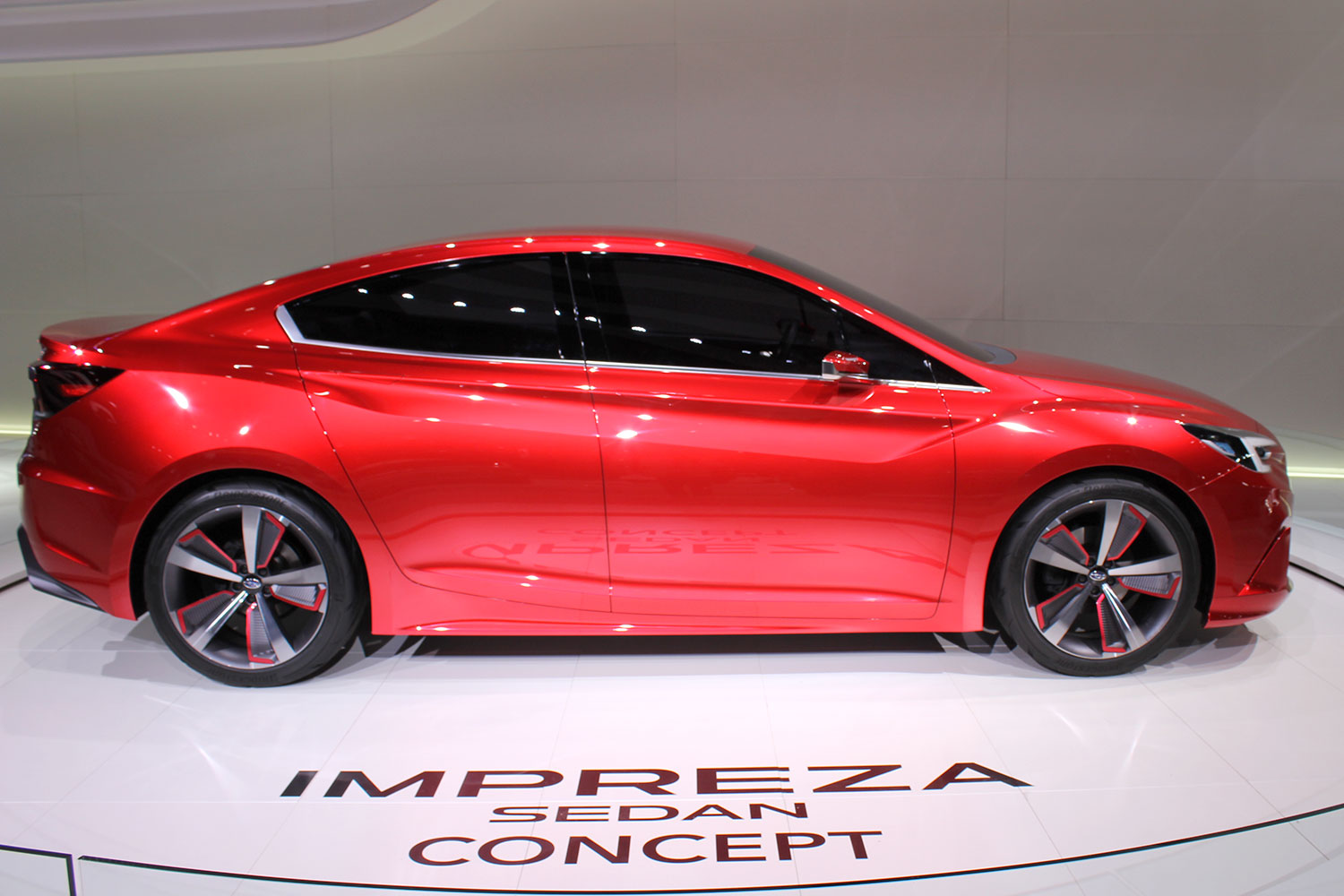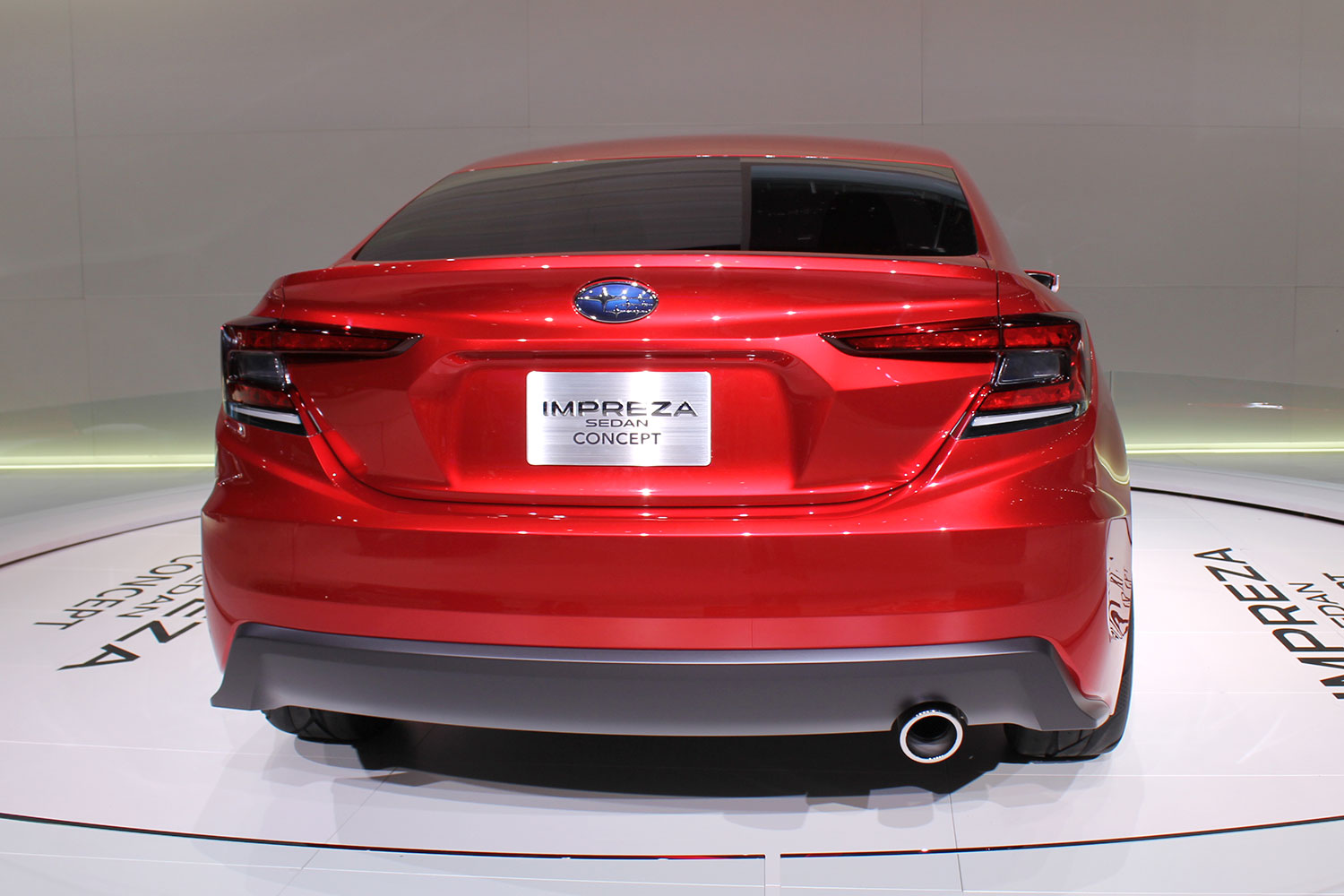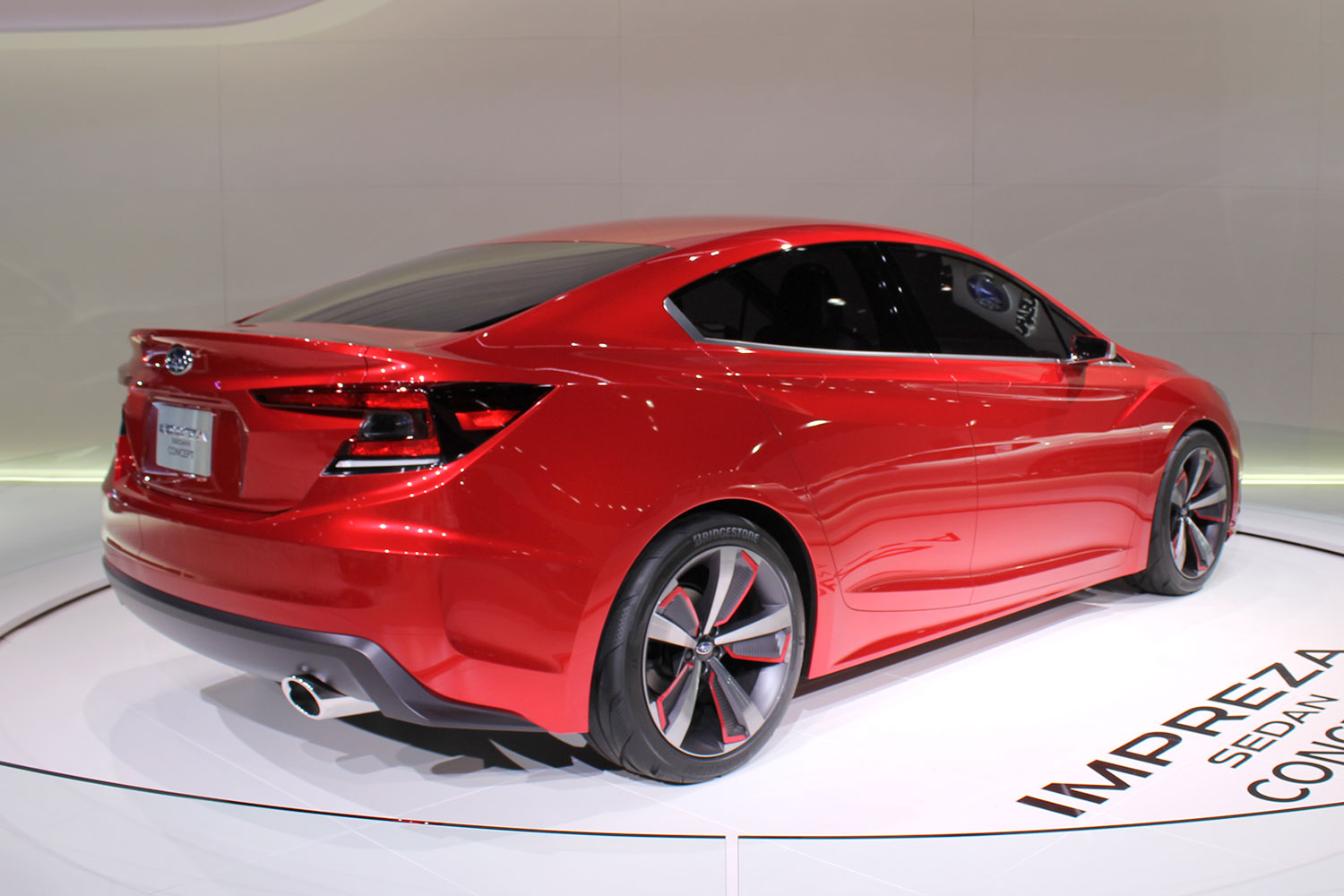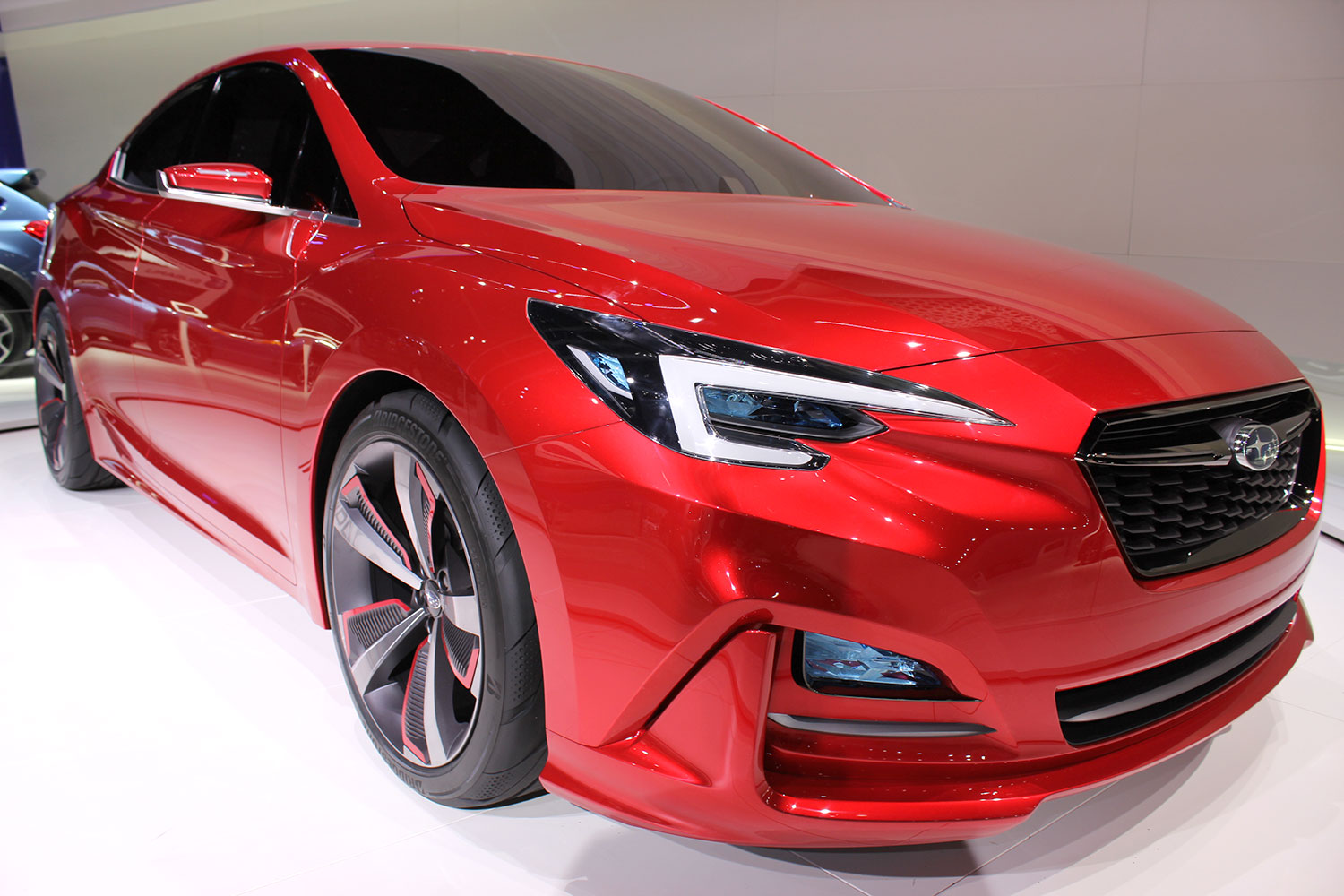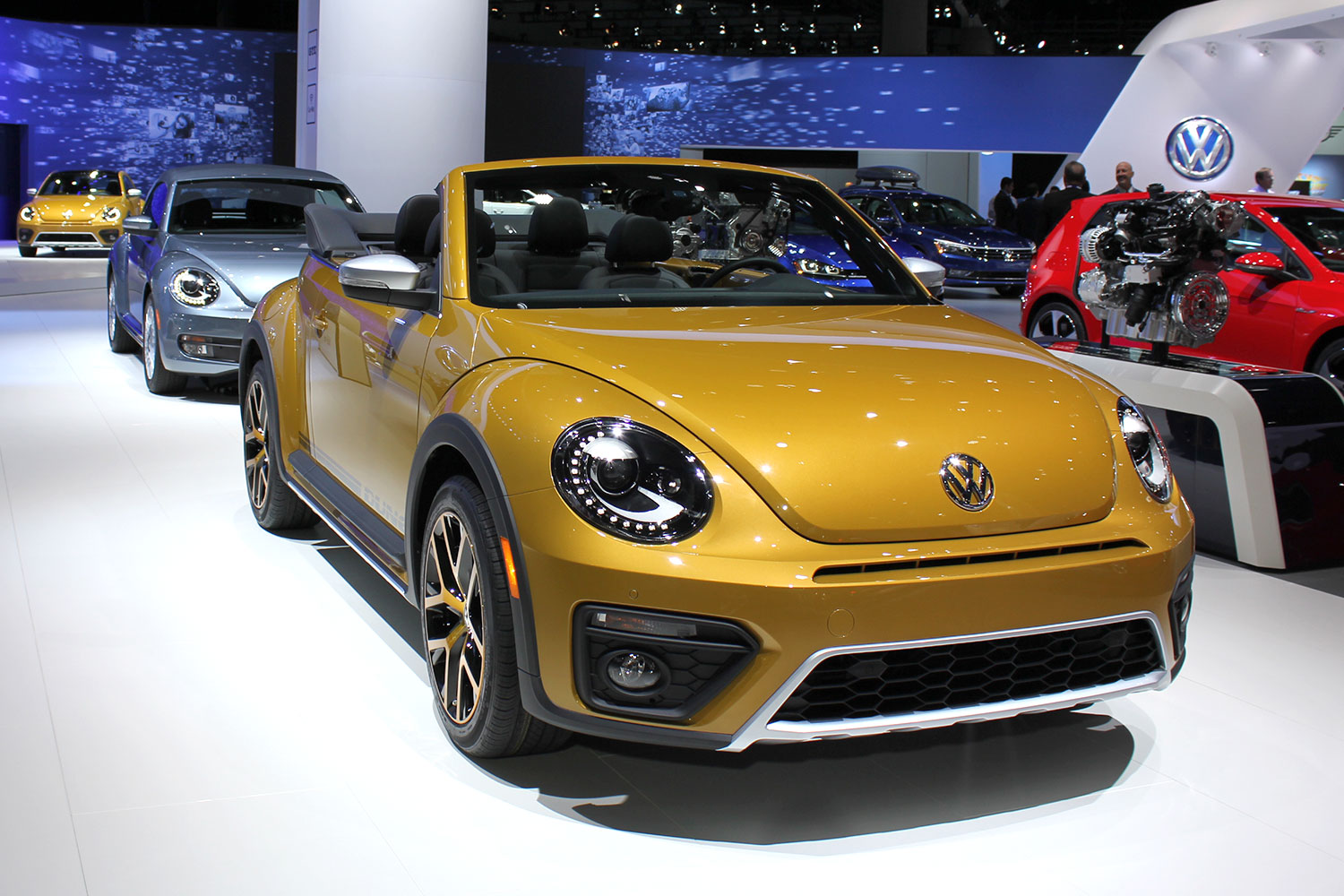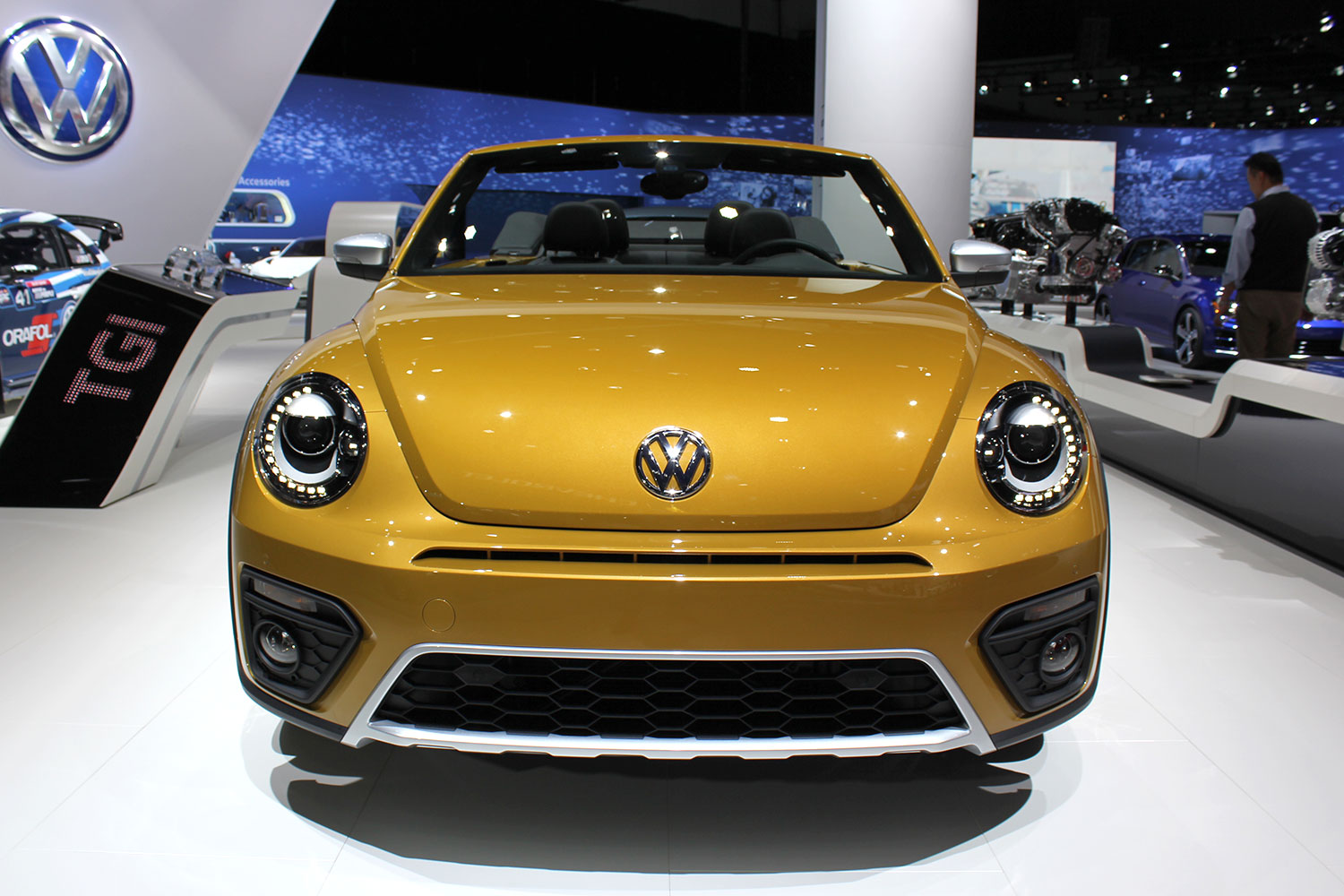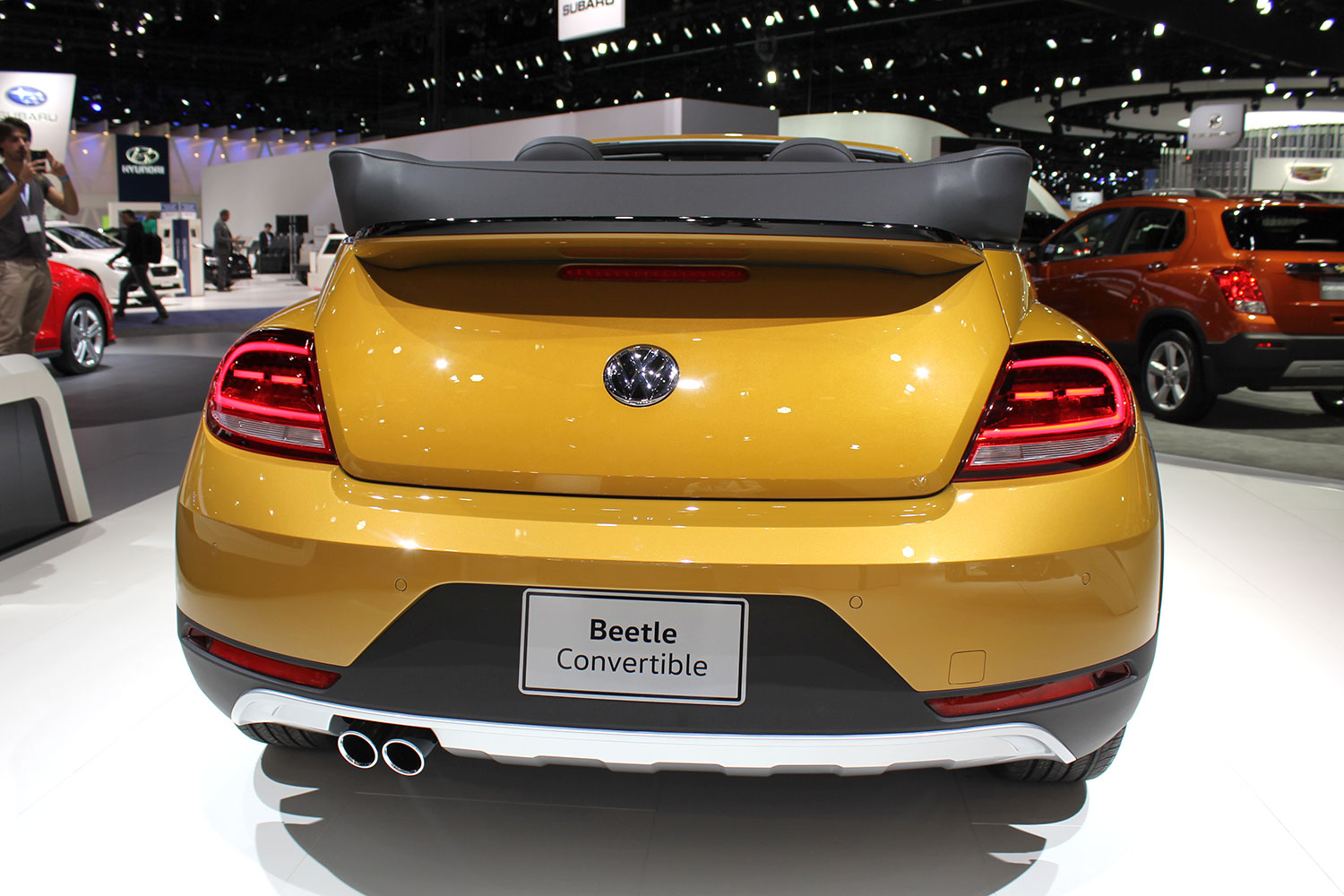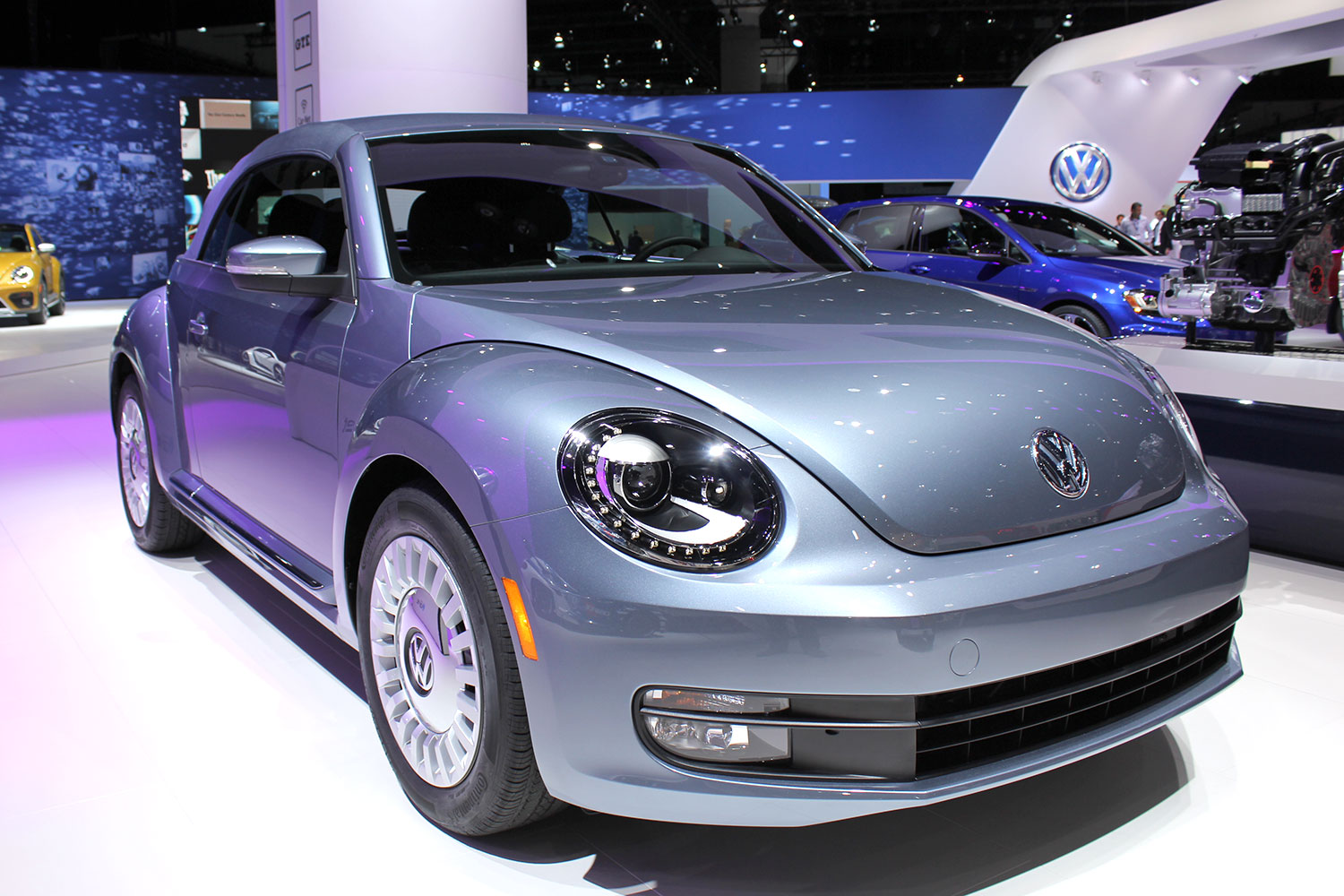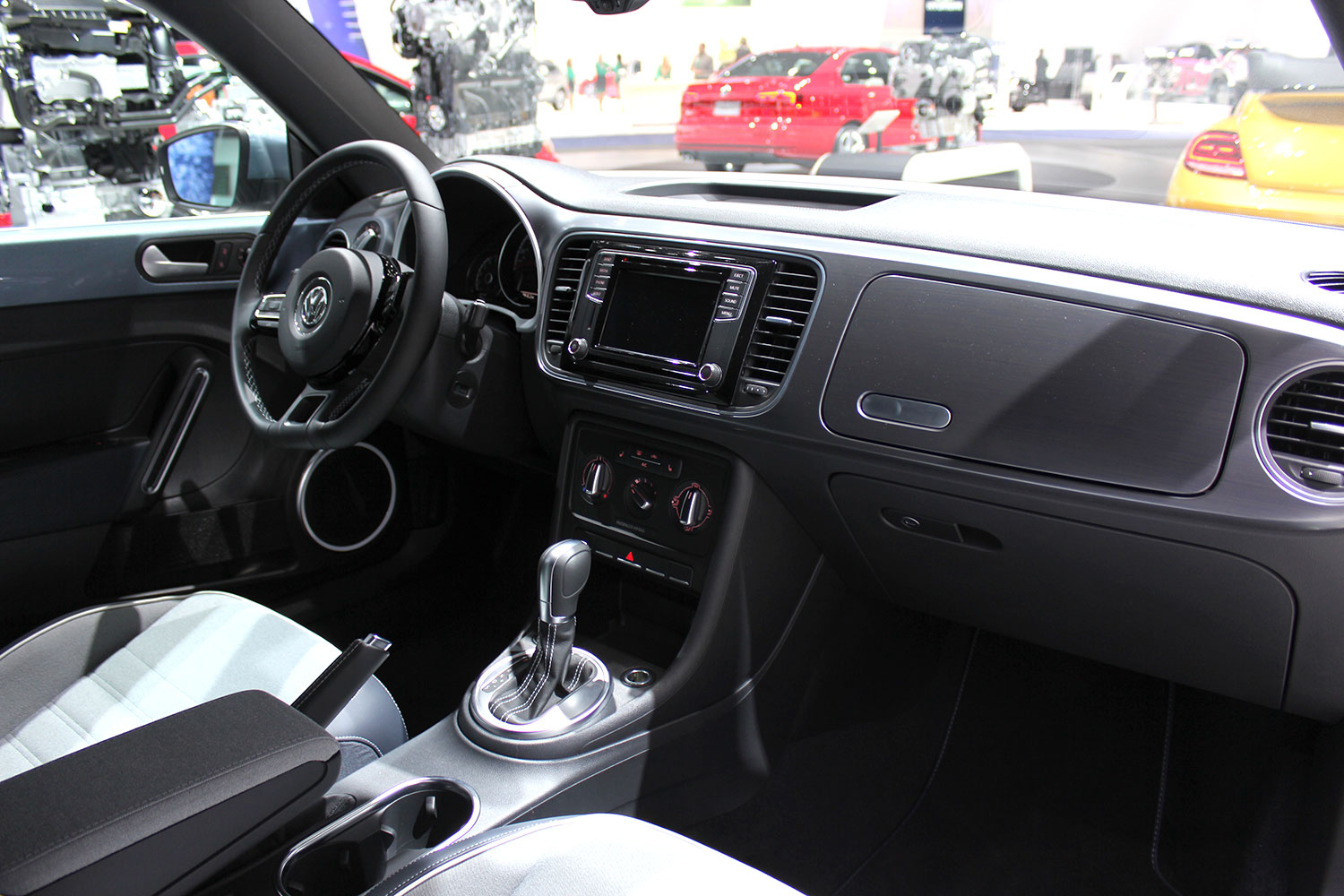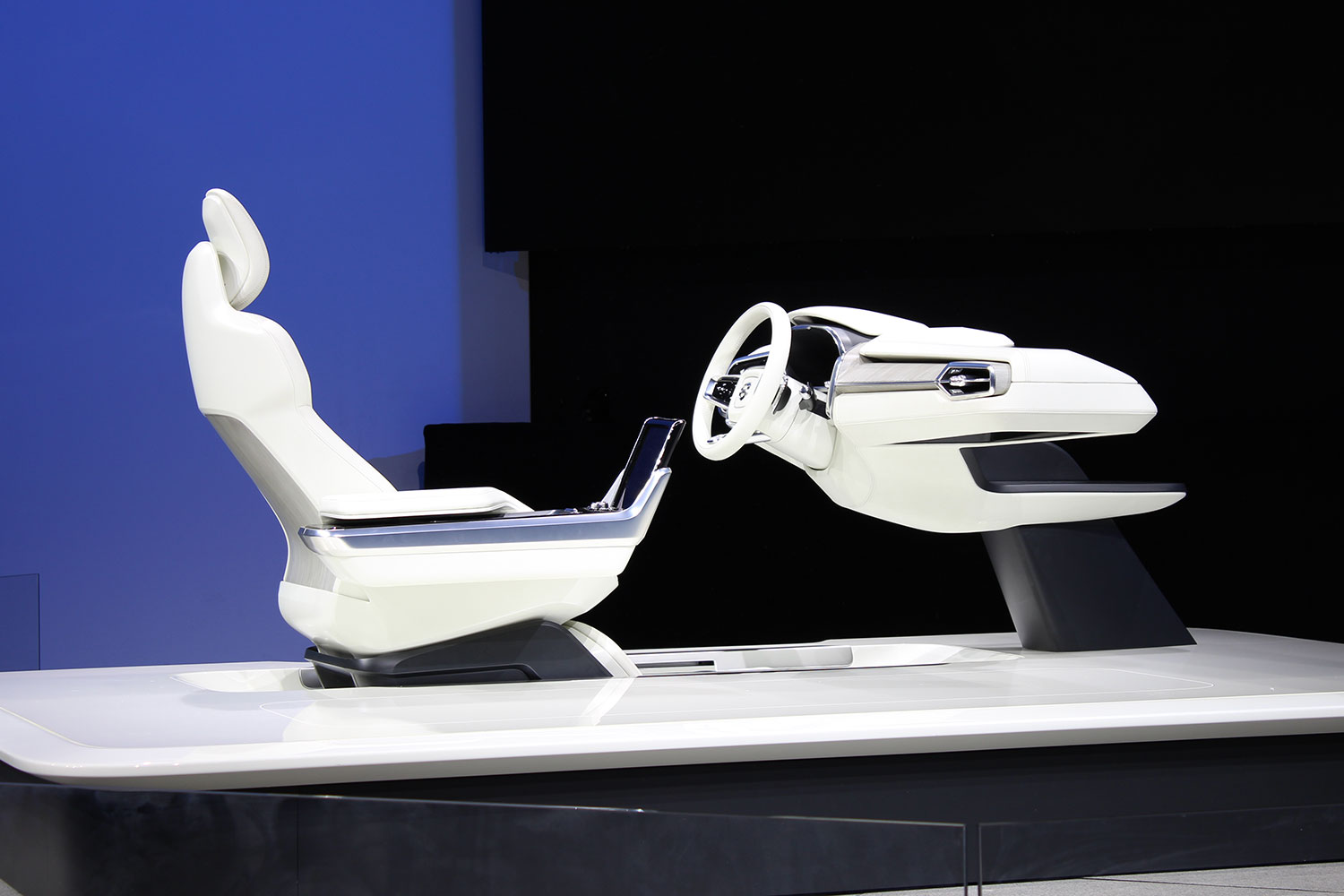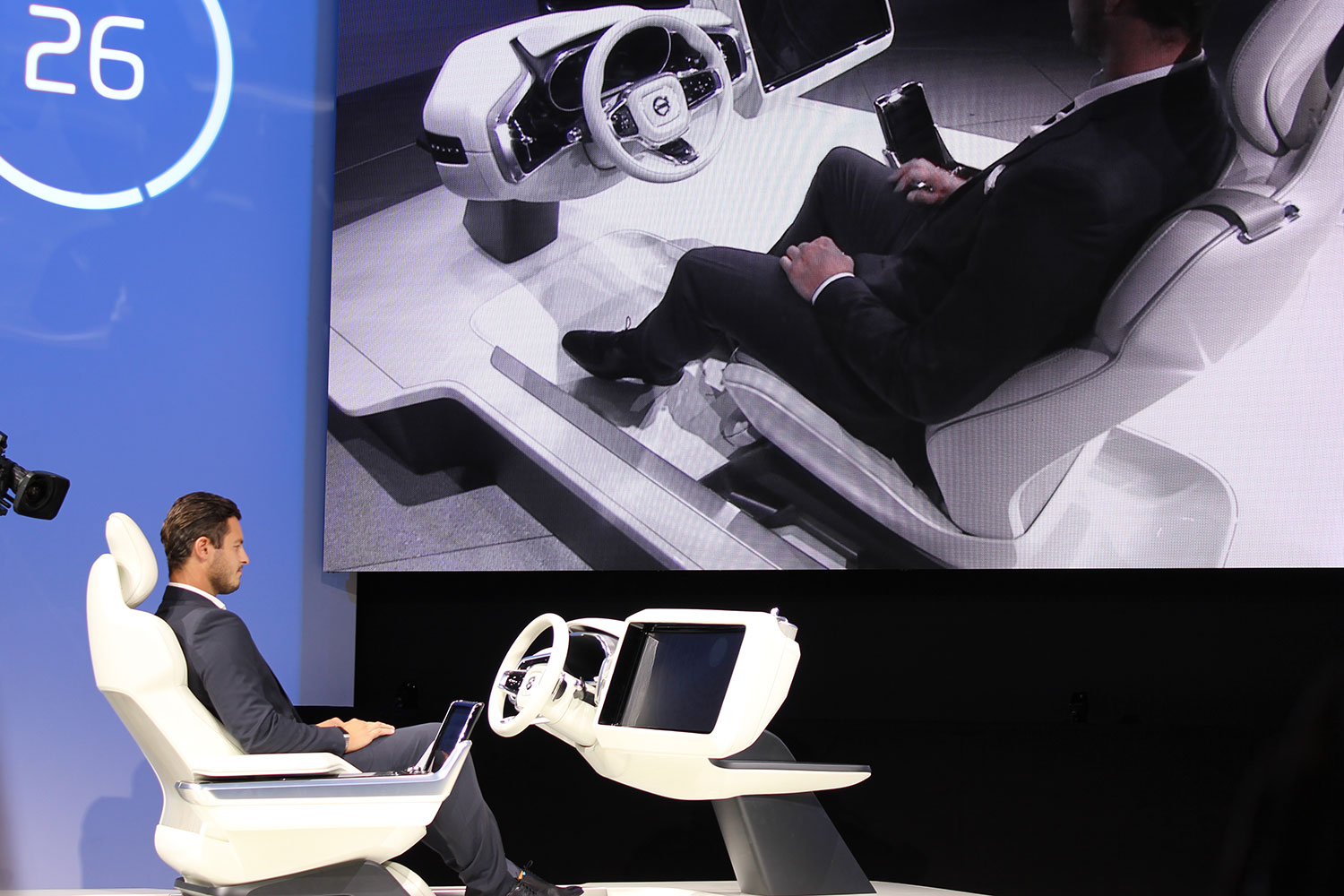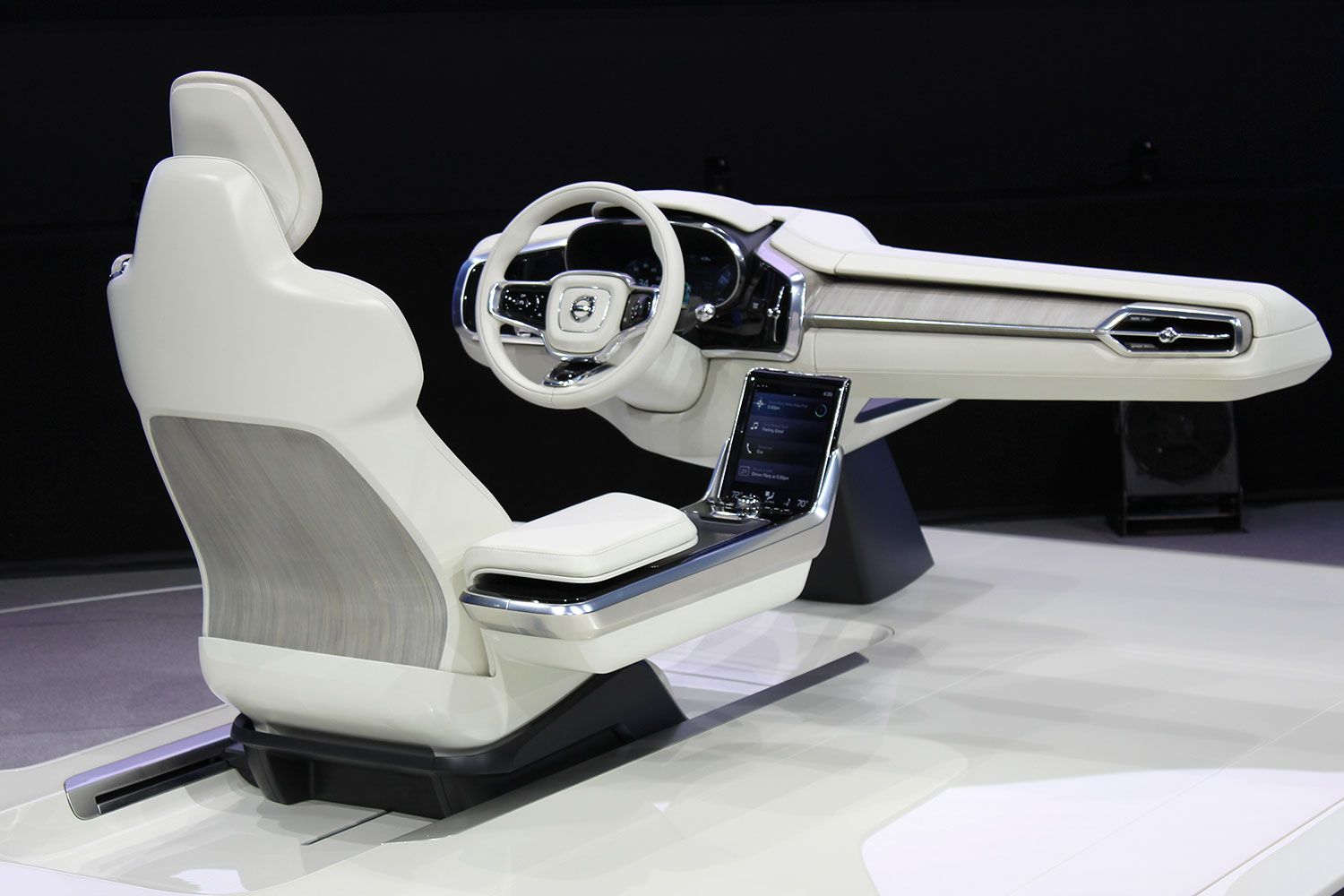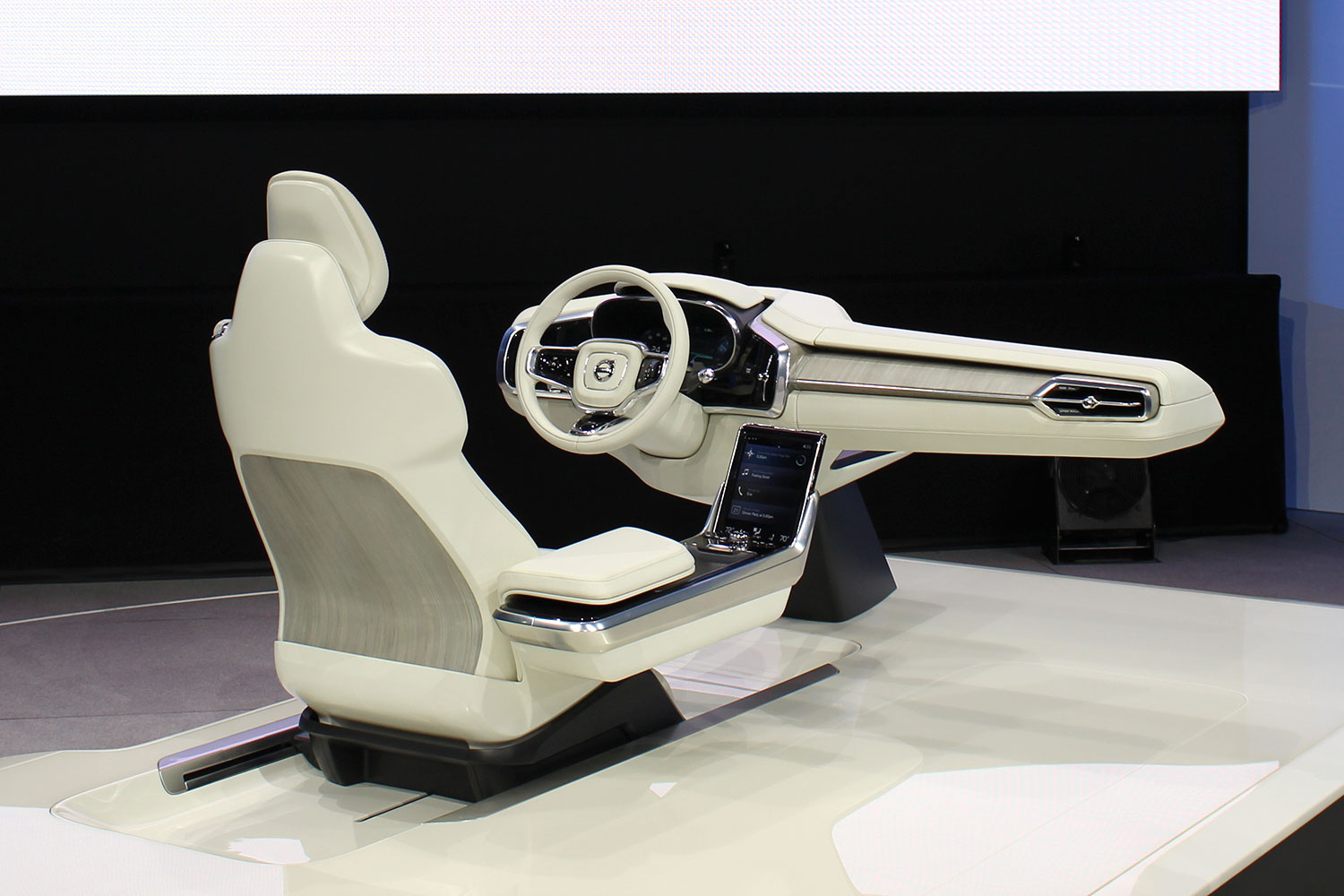Frankfurt and Tokyo have come and gone, meaning it’s time for the annual auto-show circuit to return to the U.S. As millions of Americans began scrambling to do their holiday shopping, the 2015 Los Angeles Auto Show opened this week with plenty of noteworthy new production and concept cars.
This year’s show had a little bit of everything, from high-end sports cars to economy cars, and from a concept meant to predict the future of driving, to the revival of an iconic model from the past. Overall, the show was pretty grounded, with a plurality of mainstream models that will go on sale in the coming months.
So as media days conclude and members of the automotive press stagger out of the L.A. Convention Center here, in no particular order, are our top picks from the 2015 L.A. Auto Show.
2017 Fiat 124 Spider
Fiat’s new sports car completes a circle of sorts. The original Mazda MX-5 Miata was inspired by small sports cars of the 1960s, like Fiat’s original 124 Spider. Now, the fourth-generation Miata is morphing into a new Fiat Spider.
As part of an agreement between the two companies, Mazda turned over its revamped Miata to Fiat so it could be turned into a new version of the classic Italian roadster. The styling is a love letter to the original 124 Spider, with oval headlights, a hexagonal grille, and ovoid taillights that reference its design, and sharply contrast the more modern-looking Miata.
Under the hood, there’s a Fiat-sourced turbocharged 1.4-liter four-cylinder engine, rated at 160 hp and 184 lb-ft of torque. There’s reportedly a sportier Abarth version is on the way as well, which should further distinguish the 124 Spider from its Miata cousin.
Land Rover Range Rover Evoque Convertible
Could you mount a winch to that front bumper? The Range Rover Evoque crossover is about as far from a traditional Land Rover as you can get, and the newly-introduced convertible version stretches the brand’s identity even more.
Land Rover first showed an Evoque convertible concept back in 2012, but it’s just now committing to a production version. The convertible top can operate at speeds up to 30 mph, and takes 18 seconds to fold down, or 21 seconds to raise. Chopping the roof adds 366 pounds compared to a fixed-roof, two-door Evoque, but at least this brings you closer to nature.
Mechanically, the Evoque Convertible is identical to other Evoque models. That means it gets a 2.0-liter turbocharged four-cylinder engine with 240 horsepower and 251 pound-feet of torque, coupled to a nine-speed automatic transmission. It also boasts a sophisticated four-wheel drive system and electronic aids to make off roading easy.
2017 Buick LaCrosse
Buick chose L.A. to debut its new design language with the re-sculpted 2017 LaCrosse. The sedan borrows styling cues from the Avenir concept that drew praise at the 2015 Detroit Auto Show earlier this year, as well as the 1954 Wildcat II concept.
Under the hood, the LaCrosse gets a new 3.6-liter V6, with 305 horsepower and 288 pound-feet of torque. It’s coupled to an eight-speed automatic transmission with front-wheel drive, or a new twin-clutch all-wheel drive system. Buick says the new LaCrosse chassis also shaves about 300 pounds compared to the outgoing model.
On the inside, the LaCrosse boasts more expressive interior styling than before. There’s more tech too, including Buick’s IntelliLink infotainment system with Apple CarPlay and Android Auto compatibility, plus an available head-up display, wireless phone charging, and Bose audio system.
2016 Honda Civic coupe
The redesigned Honda Civic sedan took a markedly different styling direction from the previous model, and that continues with the two-door coupe introduced in L.A. It borrows heavily from the Civic concept introduced earlier this year, with a fastback silhouette and cab-rearward proportions that normally aren’t seen on front-wheel drive economy cars.
Under the skin, the Civic coupe is essentially identical to the sedan, meaning it gets the same pair of brand-new engines. That includes a 2.0-liter four-cylinder for base models, and a 1.5-liter turbocharged four for more expensive trim levels. This is the first time a turbocharged engine has been offered on the Civic in the U.S.
The Civic coupe also gets the same revamped interior as the sedan, with an available Android-based Display Audio system and 7.0-inch touchscreen, plus Apple CarPlay and Android Auto compatibility. The two-door will soon be followed by a five-door hatchback, plus sporty Si and Type R models.
Lamborghini Huracán LP 580-2
The standard Lamborghini Huracán isn’t exactly tame, but it’s all-wheel drive system adds a layer of stability that some enthusiasts would rather do without. Lamborghini answered their prayers in L.A. with its first rear-wheel drive Huracán variant.
It’s probably best to think of the Lamborghini Huracán LP 580-2 as a more elemental version of Lambo’s “entry-level” supercar. It’s less powerful than the existing LP610-4, with 580 hp and 398 lb-ft of torque. Even with 30 fewer horses and 15 fewer torques, the LP580-2 will still do 0 to 60 mph in 3.4 seconds, and reach a top speed of 198 mph.
The rear-wheel drive configuration is supposed to make the experience more lively. The LP580-2 is 72 pounds lighter than the all-wheel drive Huracán, and the steering and electronic aids were retuned for a sharper feel. Of course, eliminating all-wheel drive also removes an important safety net, but that just means drivers will have to pay more attention. That shouldn’t be a problem in a Lamborghini.
2016 Mazda CX-9
Mazda finally got around to redesigning its largest vehicle, incorporating styling, mechanical, and technology features that have spread throughout the rest of its lineup for the past few years. The resulting 2016 CX-9 is more than just a plus-sized version of other Mazdas, though.
This latest interpretation of Mazda’s “Kodo” design language makes for a three-row crossover that’s sleeker and more car-like than much of the competition. The stylish exterior is matched by an interior with upscale touches like available Nappa leather and Japanese rosewood or aluminum trim.
Under the hood, Mazda went an unusual route with a 2.5-liter turbocharged four-cylinder engine, the newest engine in its SkyActiv series. While it may seem small for such a big vehicle, the turbo four still produces a decent 250 hp and 310 lb-ft of torque, the latter available very low in the rev range, Mazda says.
2017 Mercedes-Benz SL-Class
Mercedes’ luxurious SL-Class arrived in L.A. with a new face, channeling elements of the AMG GT. That newer model has largely taken on the role of hardcore performance car, leaving the SL to fully embrace its status as a more laid-back cruiser.
Aside from the styling changes, there are a handful of mechanical updates. The SL450 replaces the SL400 model with a more powerful version of the previous 3.0-liter twin-turbocharged V6. The SL550 continues with a 4.7-liter twin-turbo V8, and the SL63 AMG and SL65 AMG keep their 5.5-liter twin-turbo V8 and 6.0-liter twin-turbo V12, respectively. There’s a new nine-speed automatic transmission for non-AMG models, and updated seven-speed automatics for those versions.
The swanky SL is also loaded with tech, including Mercedes’ Active Body Control adaptive suspension and Driver Assistance package of electronic safety features. It still has a retractable hardtop, too, providing both the security of a coupe and the open-air experience of a convertible.
Subaru Impreza Sedan concept
A new Subaru Impreza is coming for 2017, and Subaru already previewed it with an Impreza hatchback concept at the 2015 Tokyo Motor Show. But Americans tend to like sedans more than hatchbacks, so Subaru reserved the Impreza Sedan concept for L.A.
The concept is an attempt by Subaru to make a car that is less utilitarian and more stylish. Highlights of its “Dynamic x Solid” design language include a hexagonal grille, C-shaped headlights, and taillights that look like they were taken off the wildly-styled Lexus RC coupe. Some of this may be toned down for production.
Subaru did not discuss technical details, but expect the production 2017 Impreza to use a boxer-four engine and come standard with all-wheel drive, just like nearly every other Subaru. The next-generation Impreza will be based off a new modular platform, and should appear sometime next year.
Volkswagen Beetle Dune and Denim
Volkswagen had some good news for children of ’70s, in the form of two recent retro concepts revived as production-ready special editions. The Beetle Dune and Denim models are inspired by customized and special-edition Volkswagens from the Disco Decade.
The Beetle Dune is inspired by “Baja Bug” desert off roaders, channeling them with styling features like a higher ride height, aluminum skid plates, model-specific graphics, and a tougher front fascia. Both special editions use a 1.8-liter turbocharged four-cylinder engine and six-speed automatic transmission.
The Beetle Denim is exactly what it sounds like. Recalling the 1970s Beetle Jeans, it features exterior and interior colors and trim meant to reference the look of denim. No actual denim is used in the cabin though; the seats are cloth and leatherette. The Beetle Denim will be offered as a convertible only, while the Dune will be sold as a convertible or a coupe.
Volvo Concept 26
Volvo’s concept for the 2015 L.A. Auto Show wasn’t actually a car. Called the Concept 26, it’s just a seat, dashboard and steering wheel, but it’s meant to show what the interior of a future self-driving car could be like.
The Concept 26 can rearrange itself in three configurations: Drive, Create, and Relax. Drive gives the person behind the wheel control, and minimizes distractions so they can concentrate on the task at hand. Create initiates autonomous driving, and turns the cockpit into a mini work station. Relax reclines the seat and moves the center console away so the driver can, well, relax.
Volvo claims U.S. drivers will be able to gain an average 26 minutes of free time per commute by switching to a self-driving car, hence the concept’s name. Drivers who live in more congested areas could save more, the company notes. Volvo doesn’t want to completely take away driving from its customers, though, which is why the Concept 26 still has a steering wheel.
Editors' Recommendations
- Motorola MA1 gives your car wireless Android Auto
- Audi GrandSphere concept shows how autonomy opens new design avenues
- The most exciting PC gaming trends from CES 2021
- Amazon’s Echo Show 10 (3rd Gen) has a screen that moves so you don’t have to
- New York International Auto Show canceled for 2020
